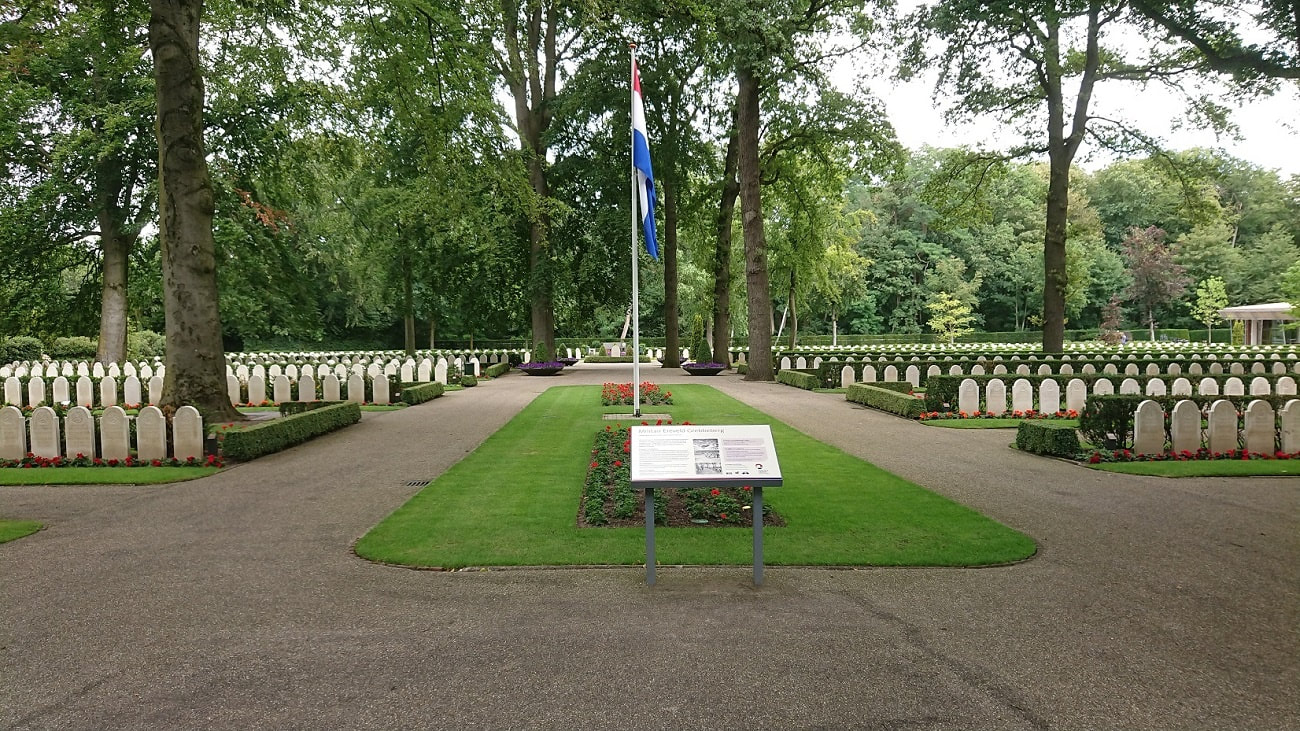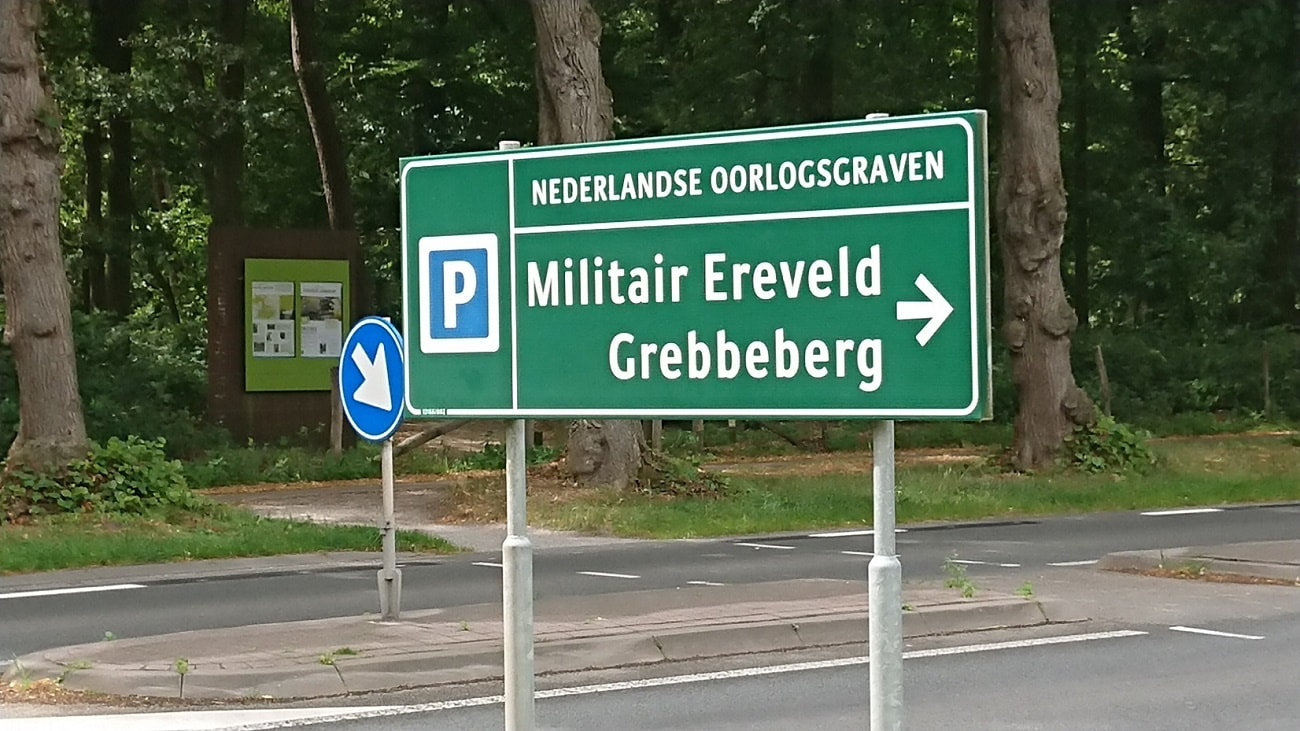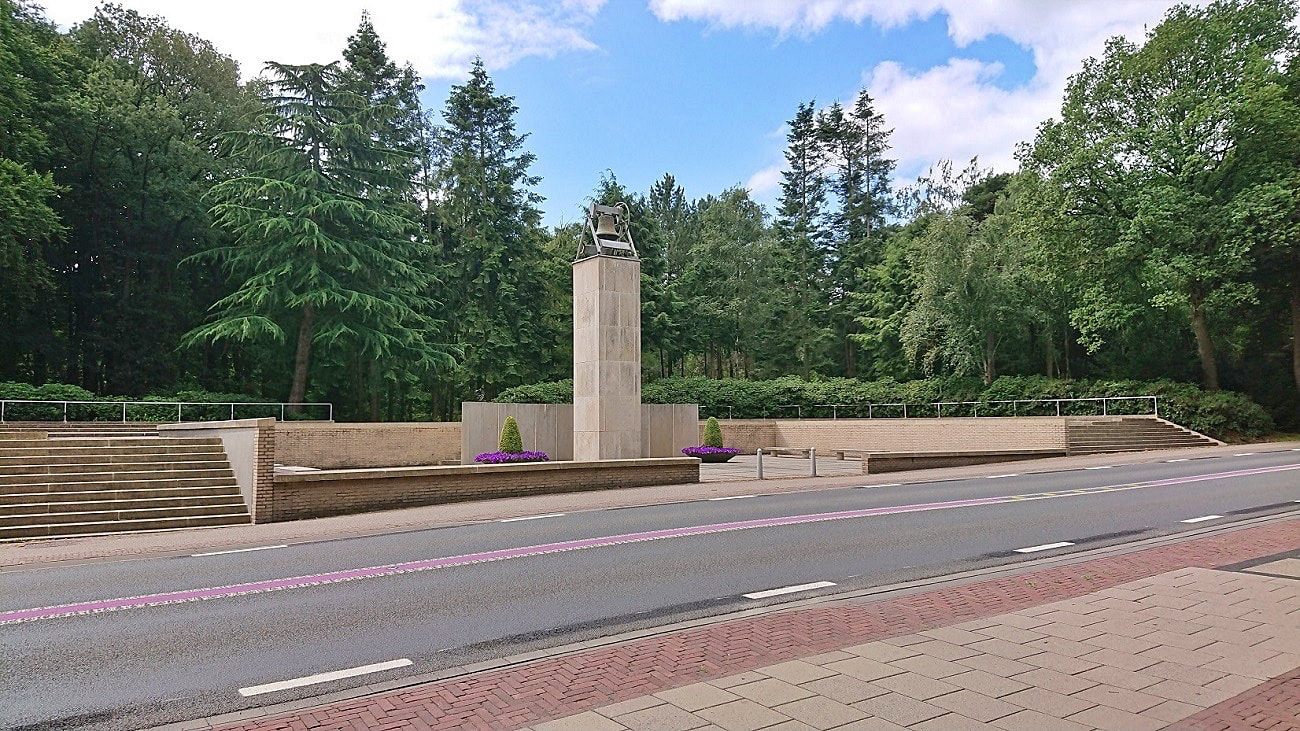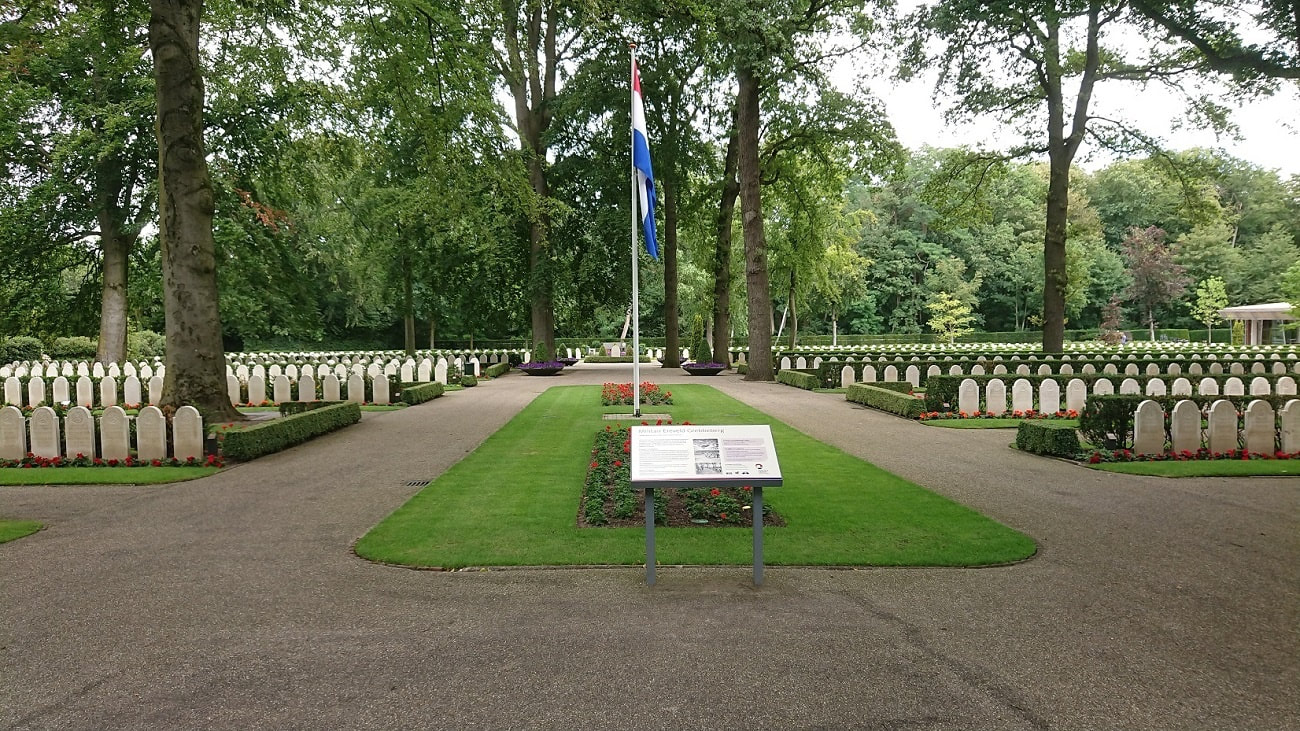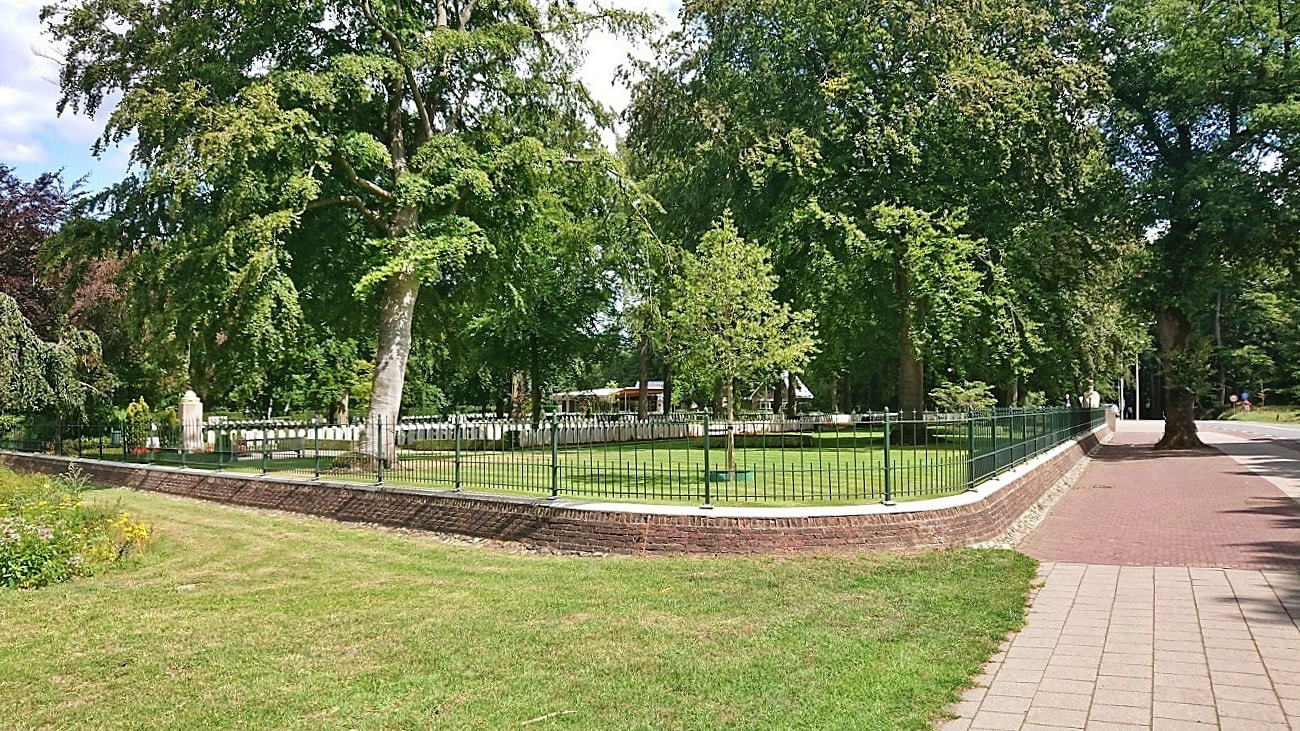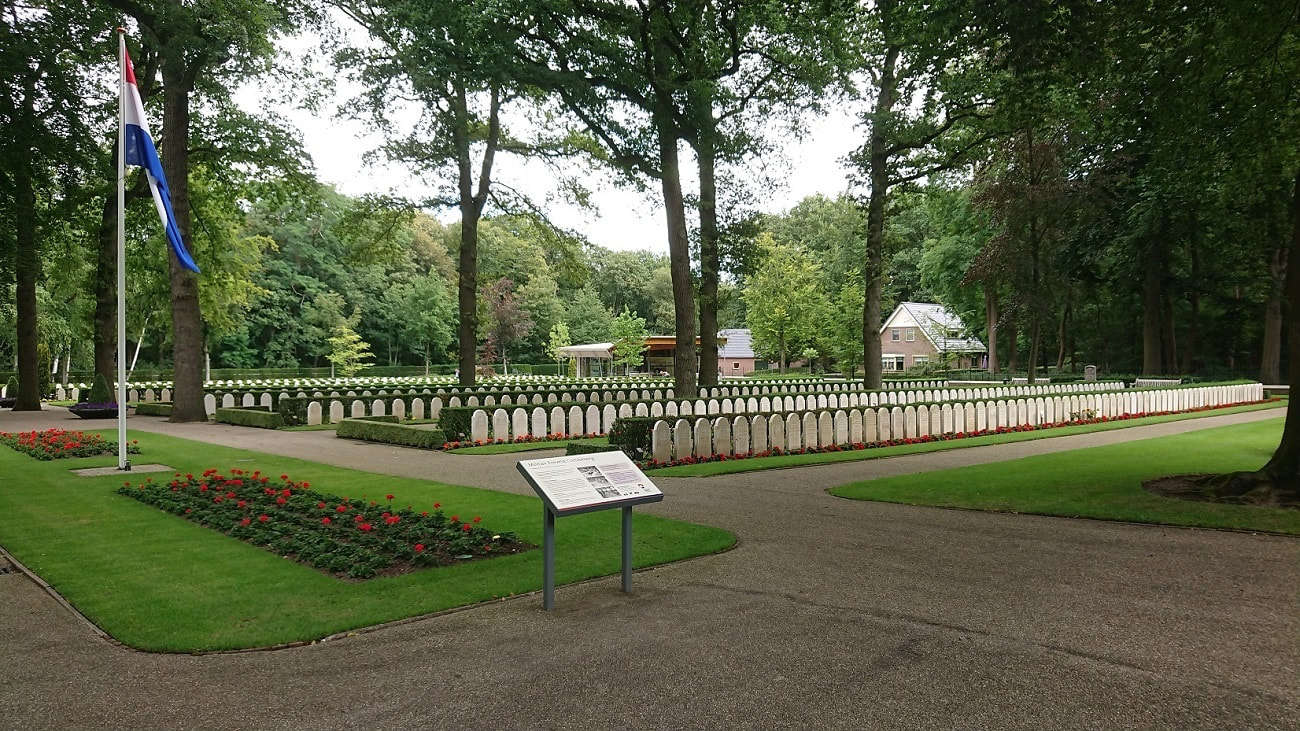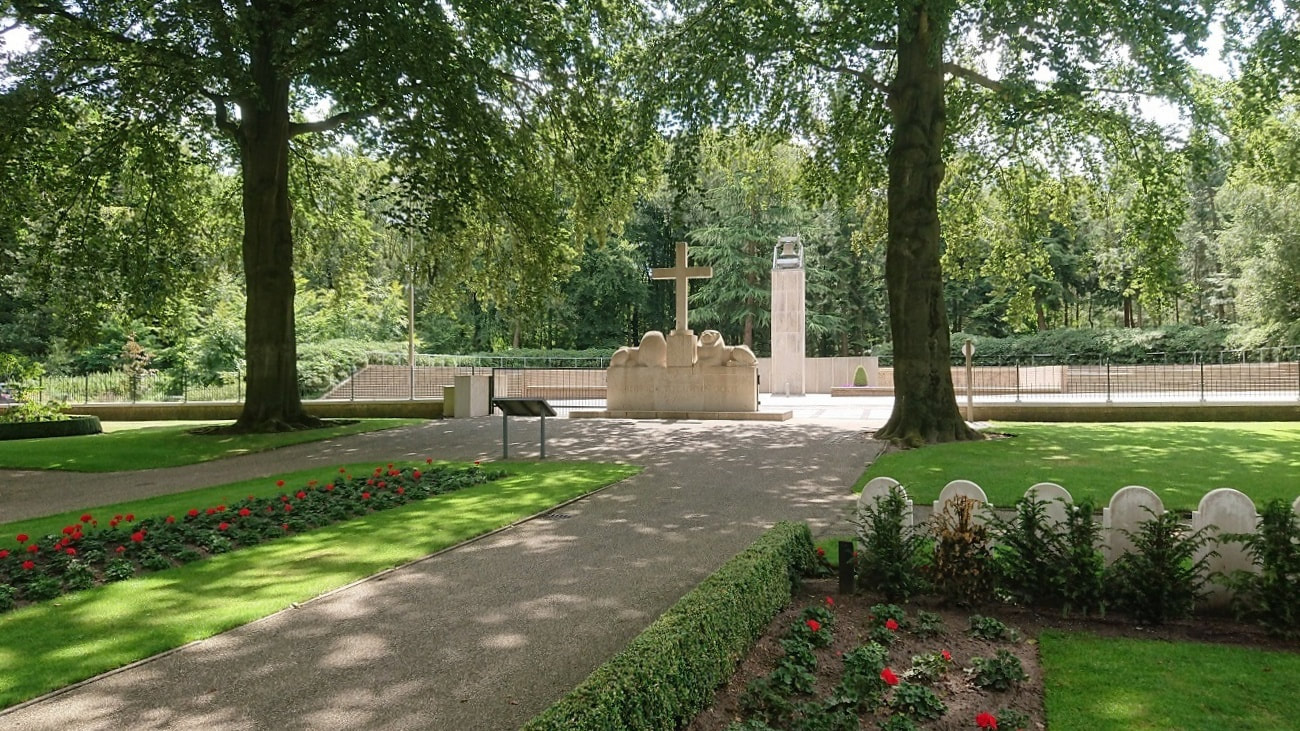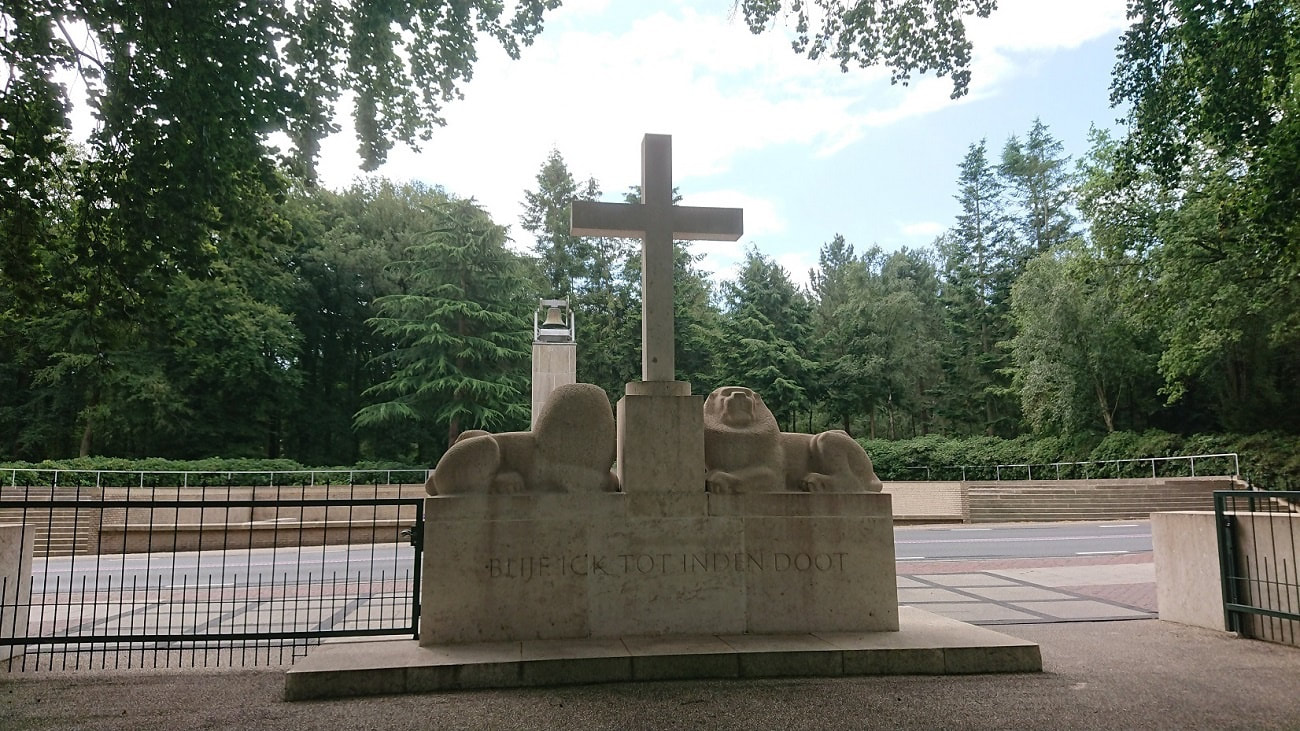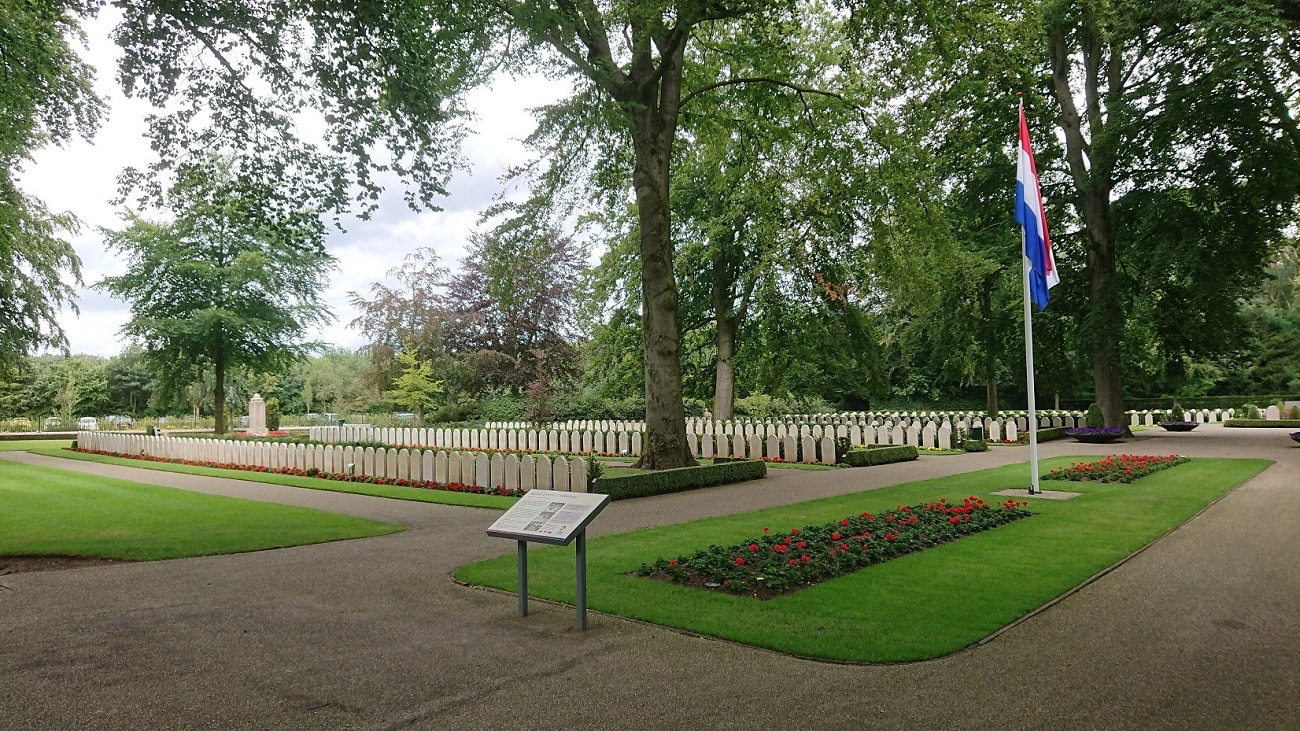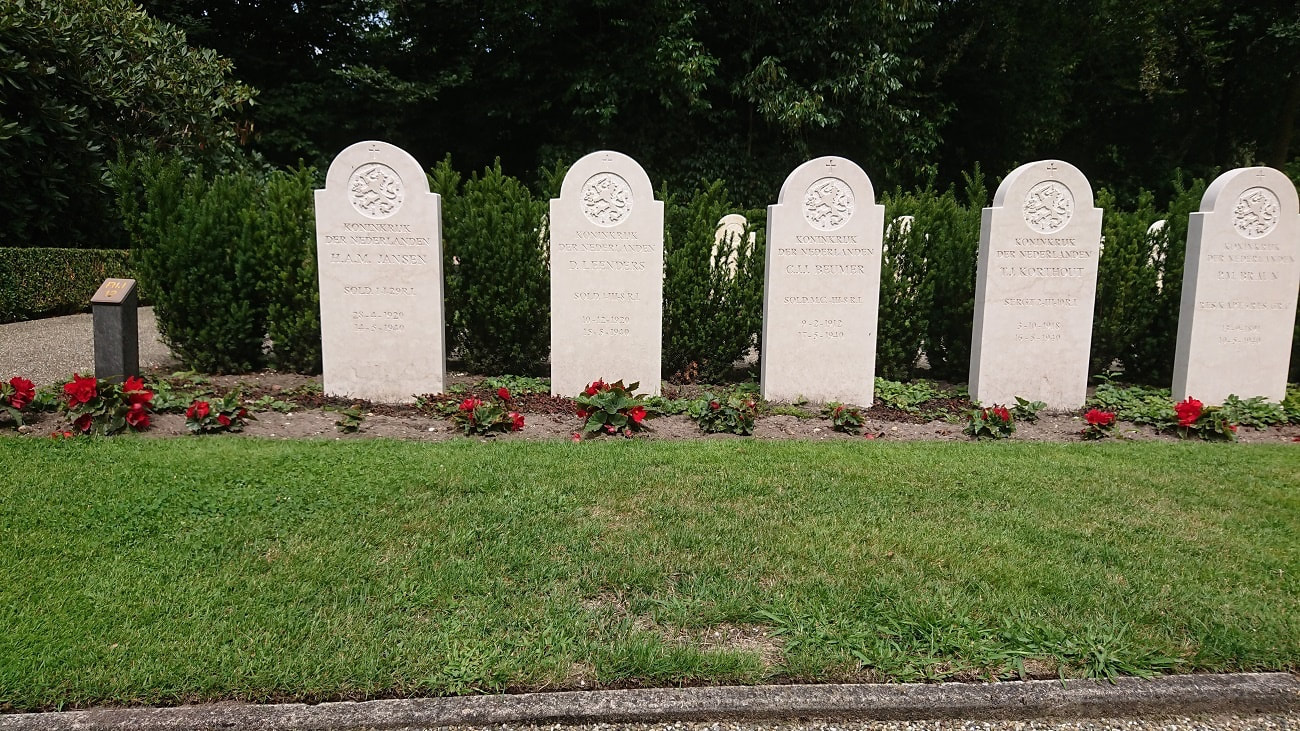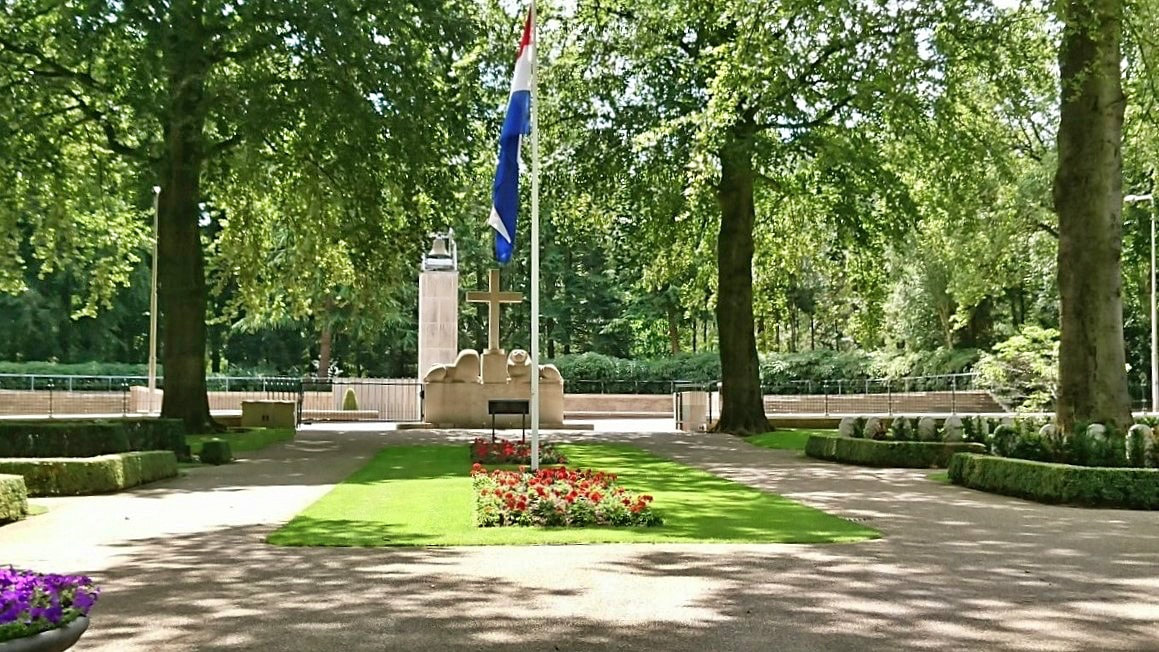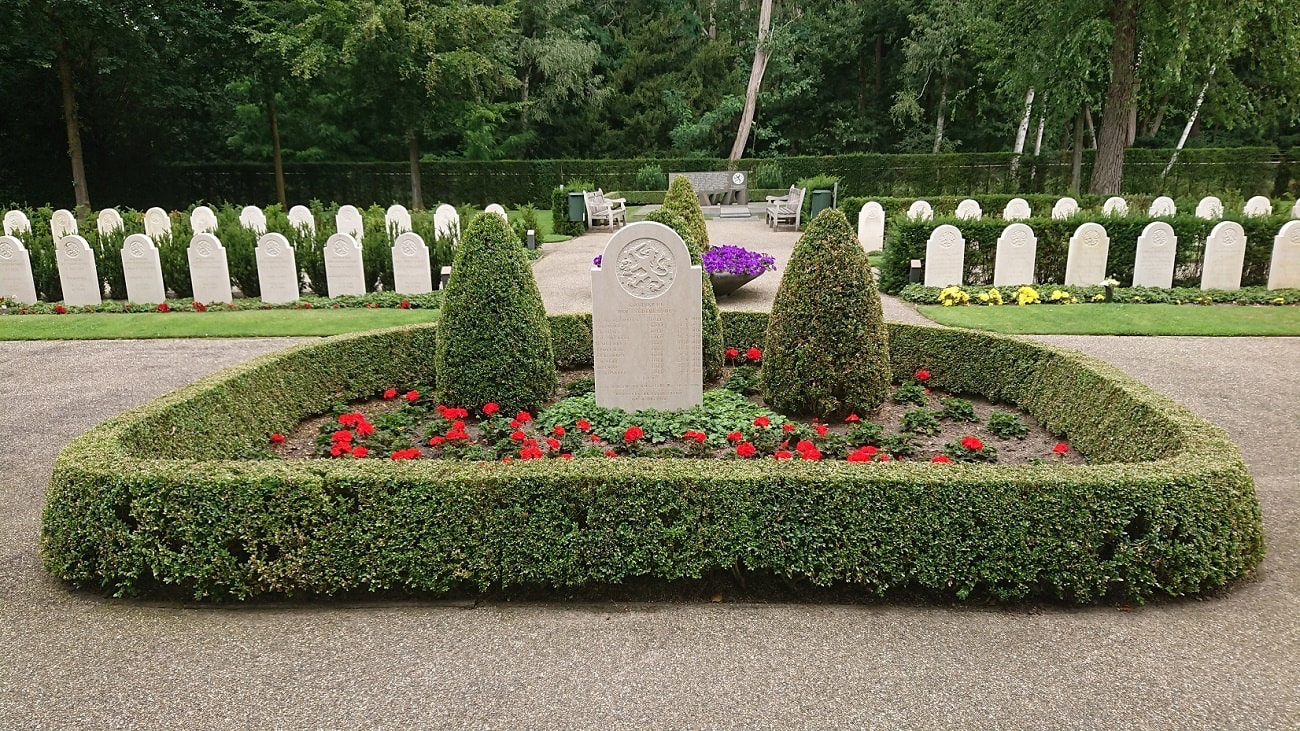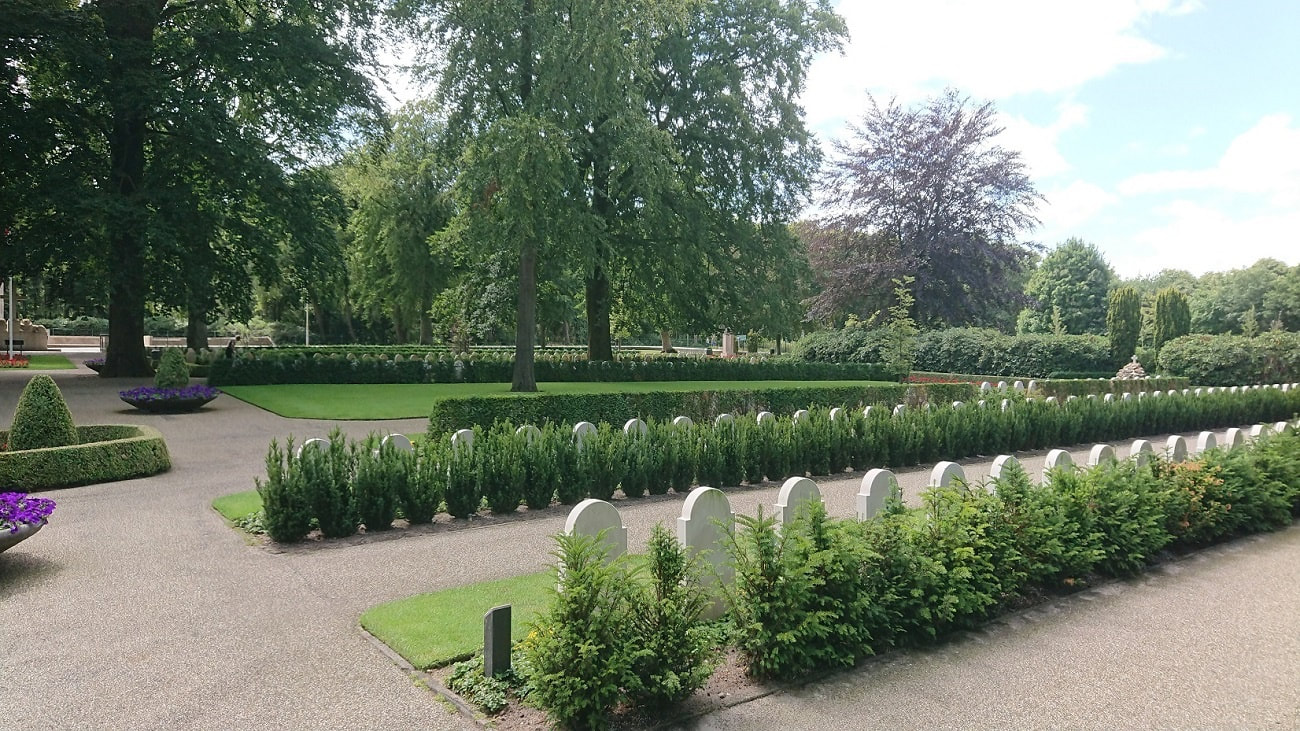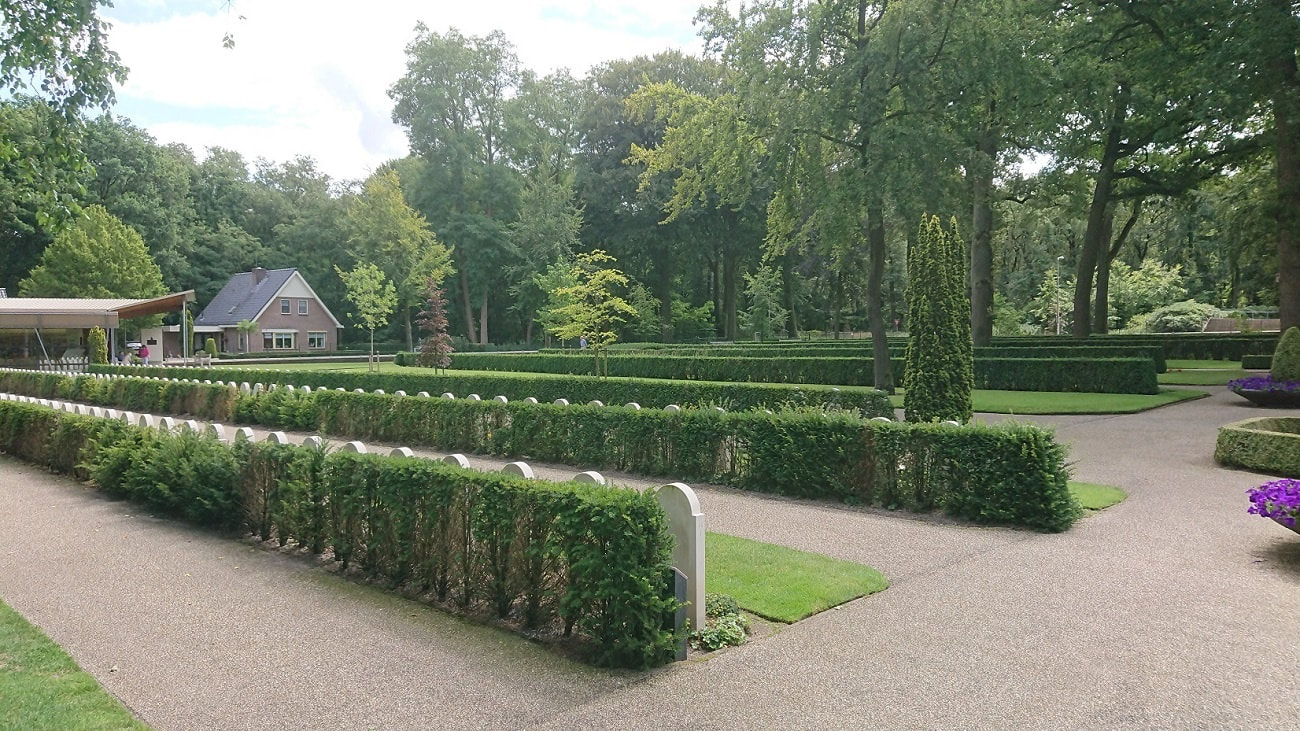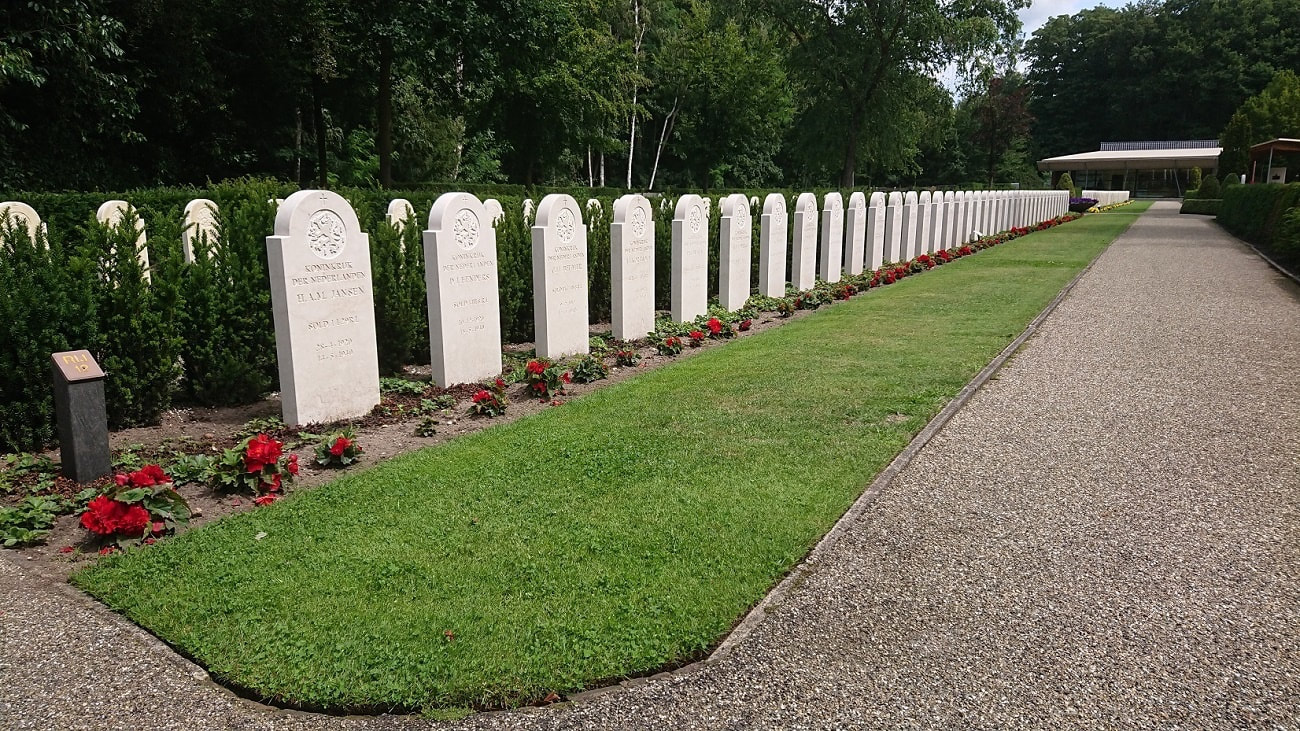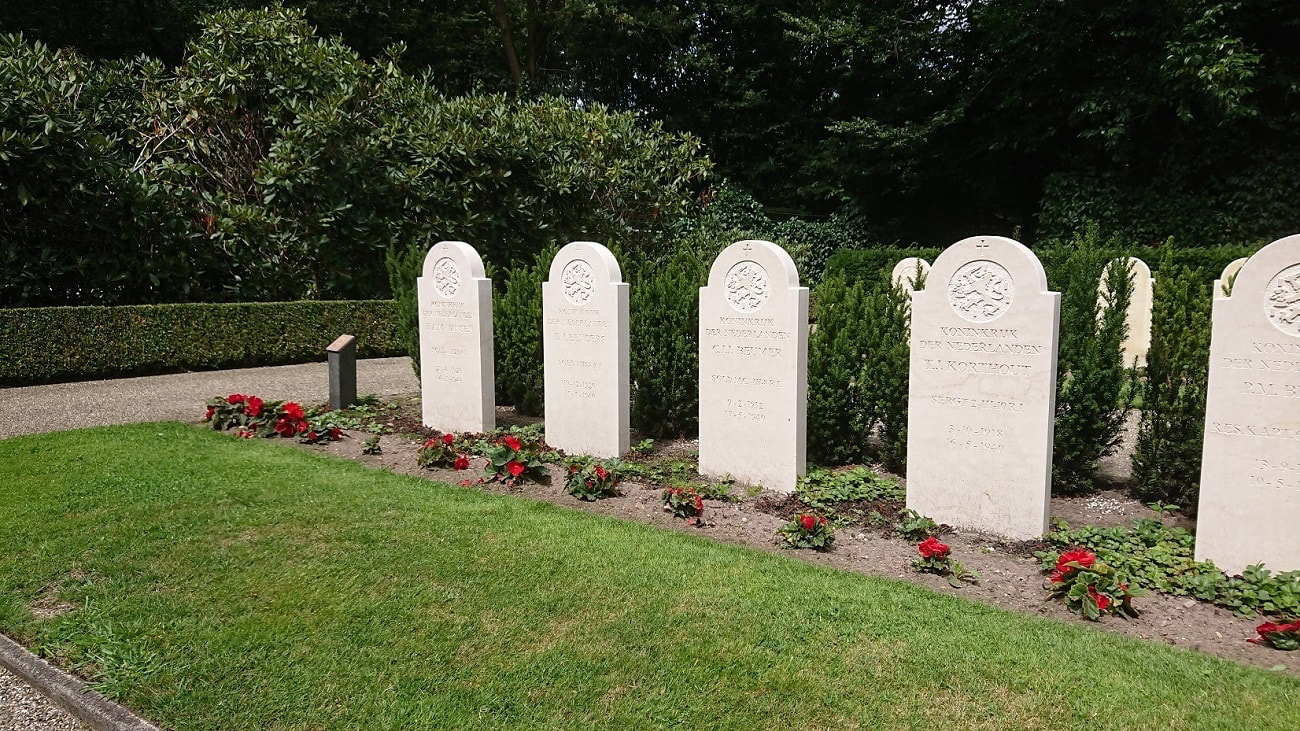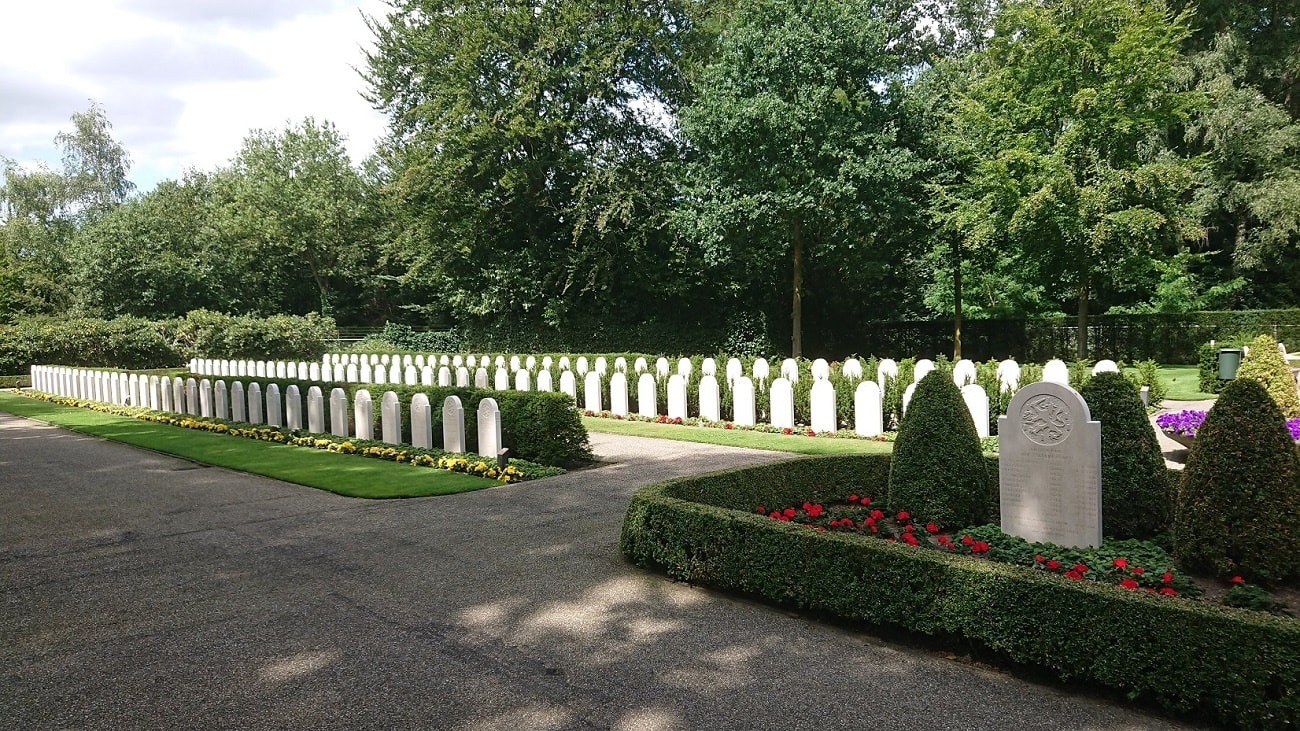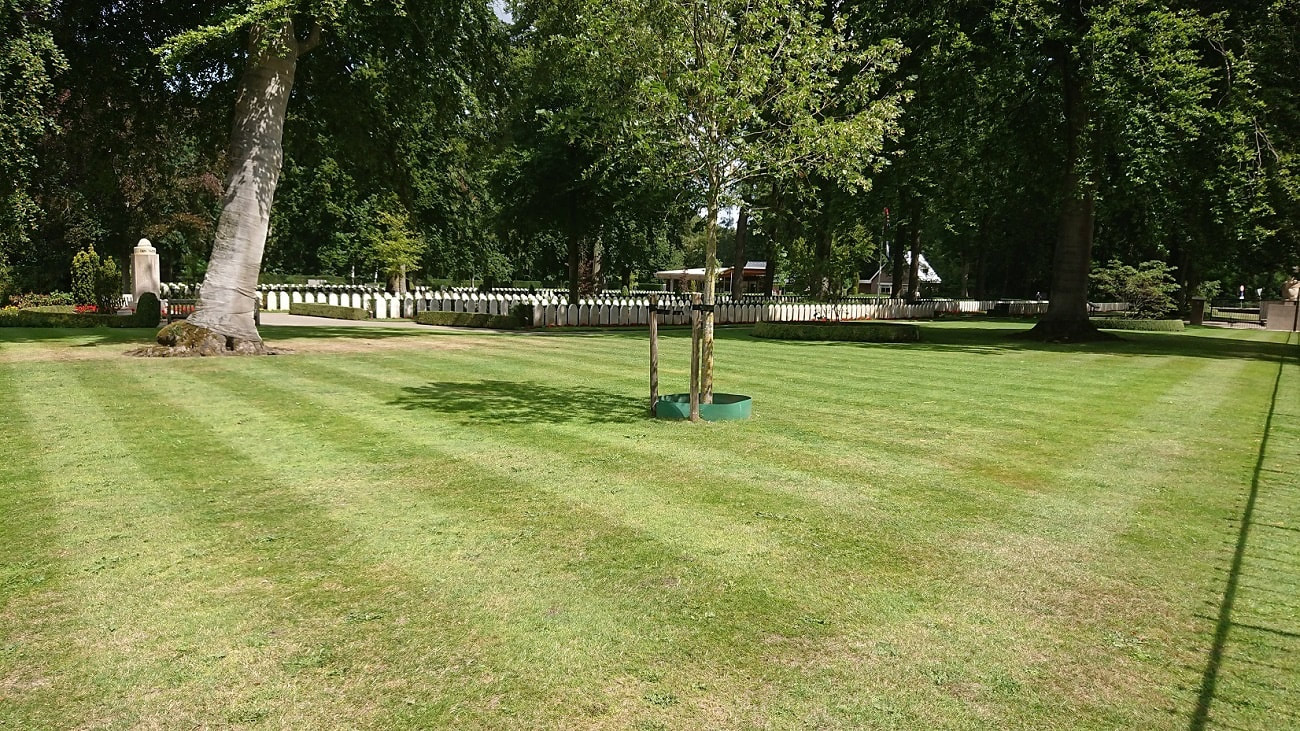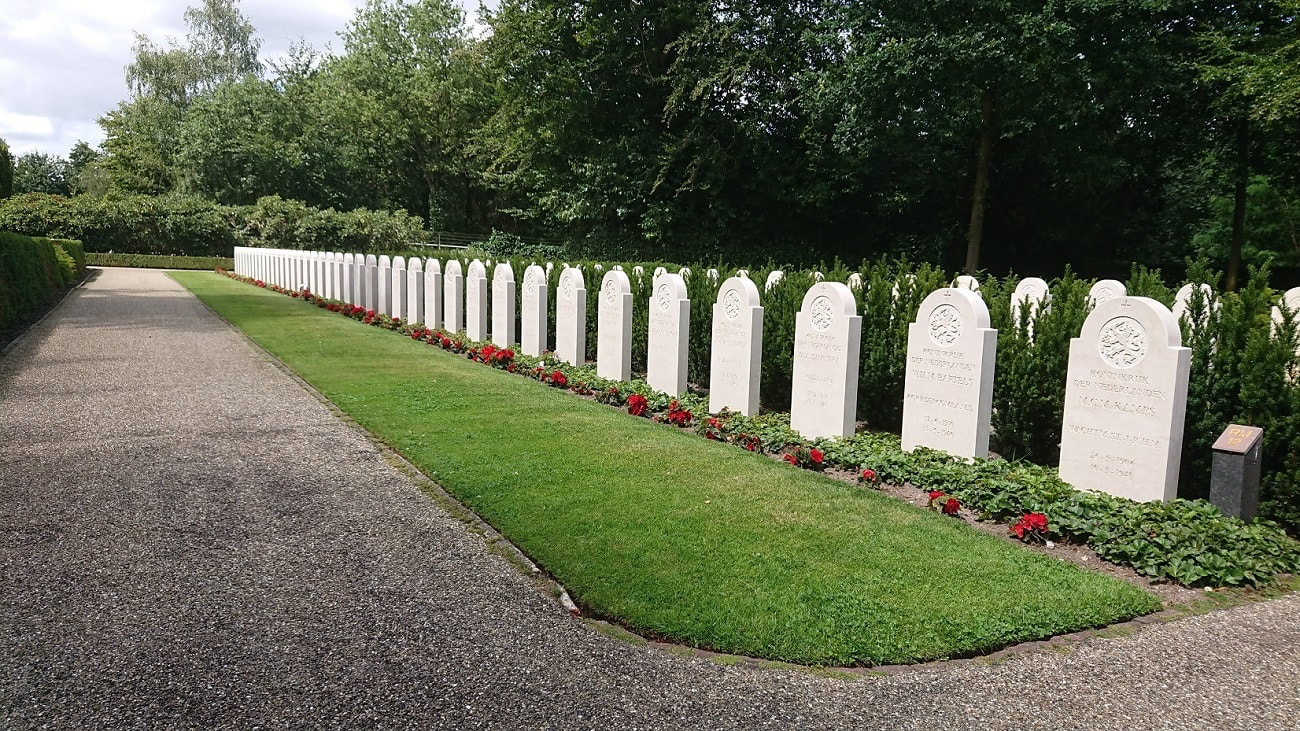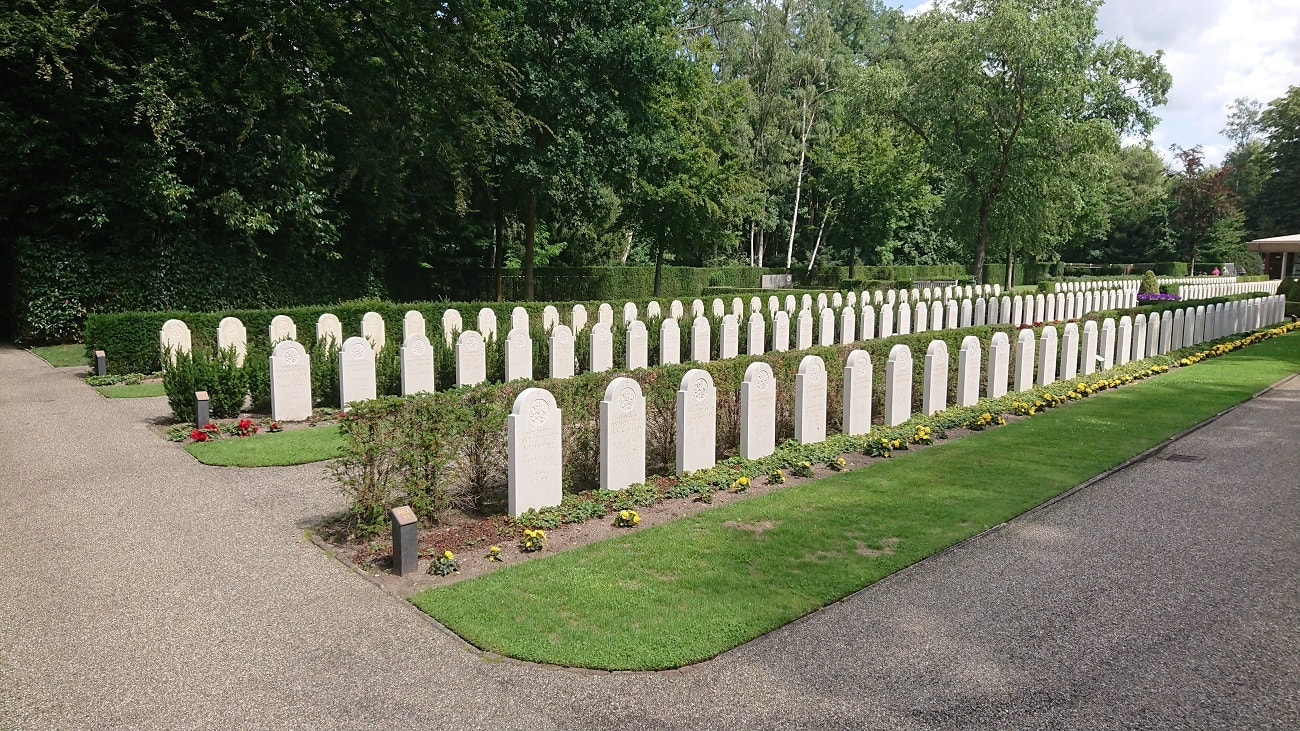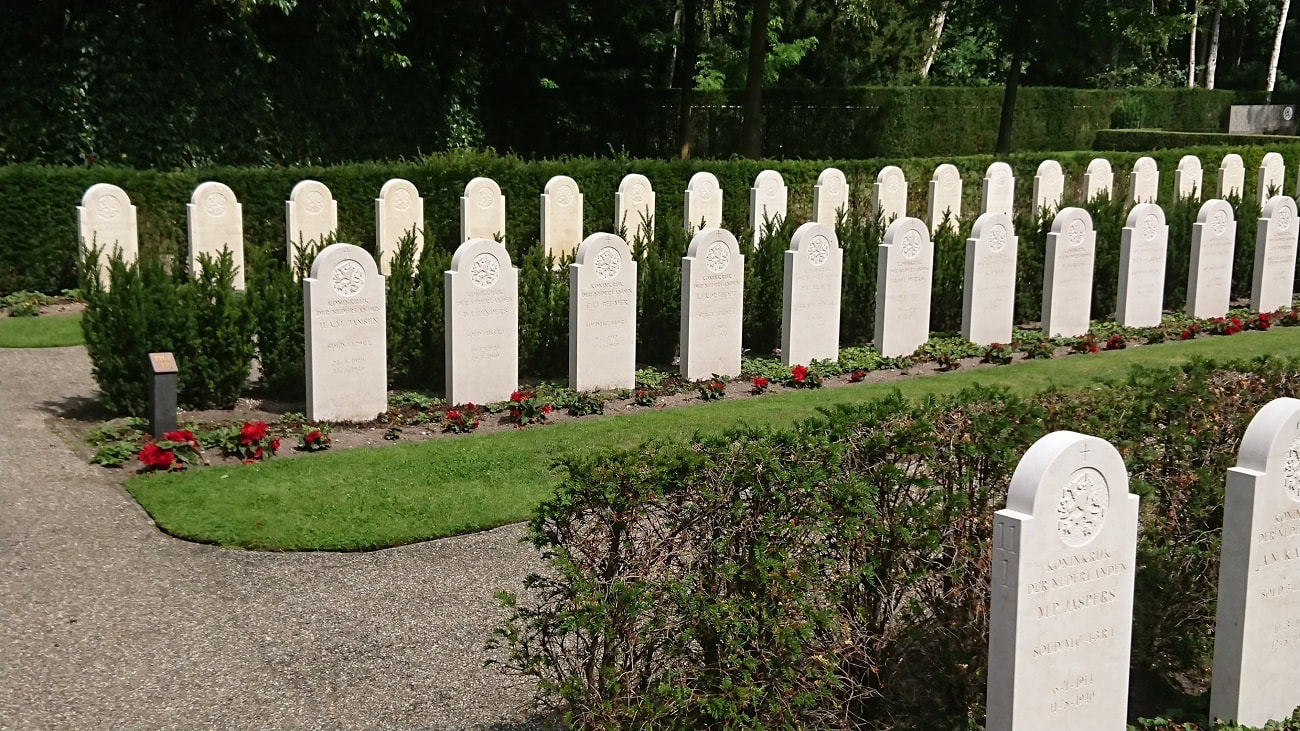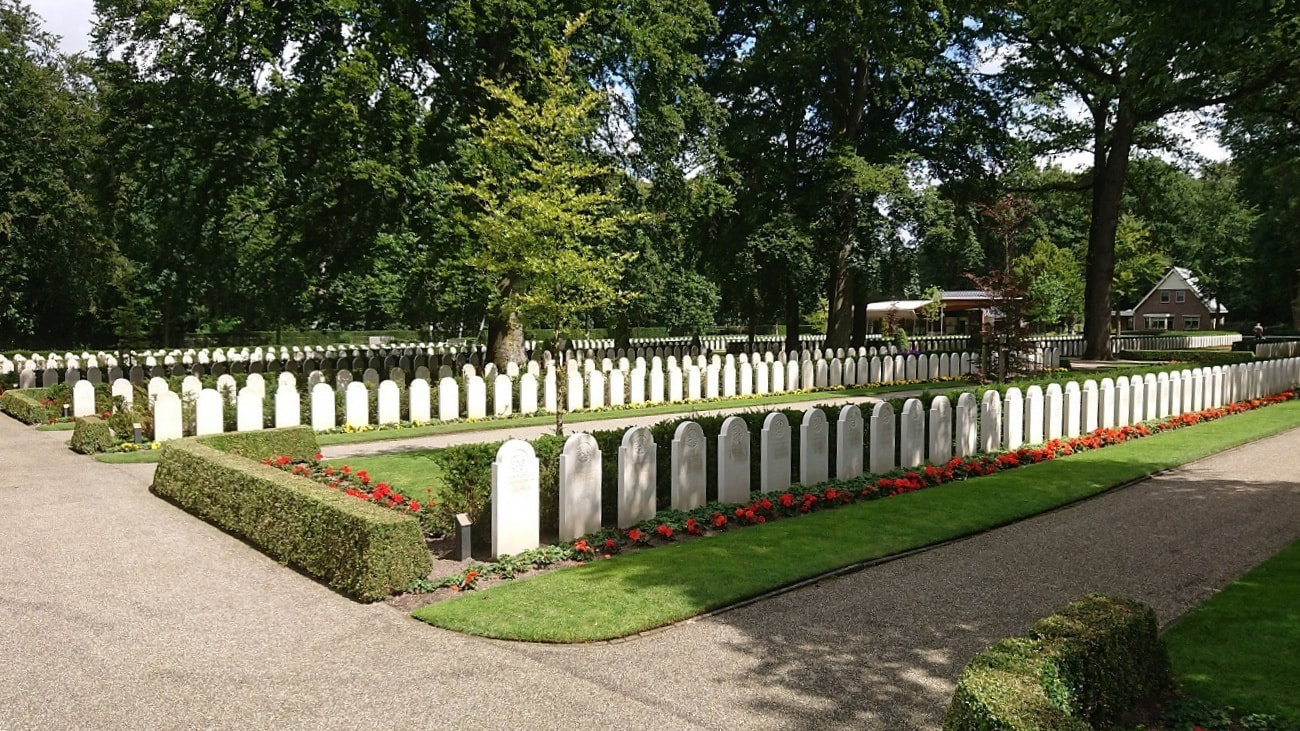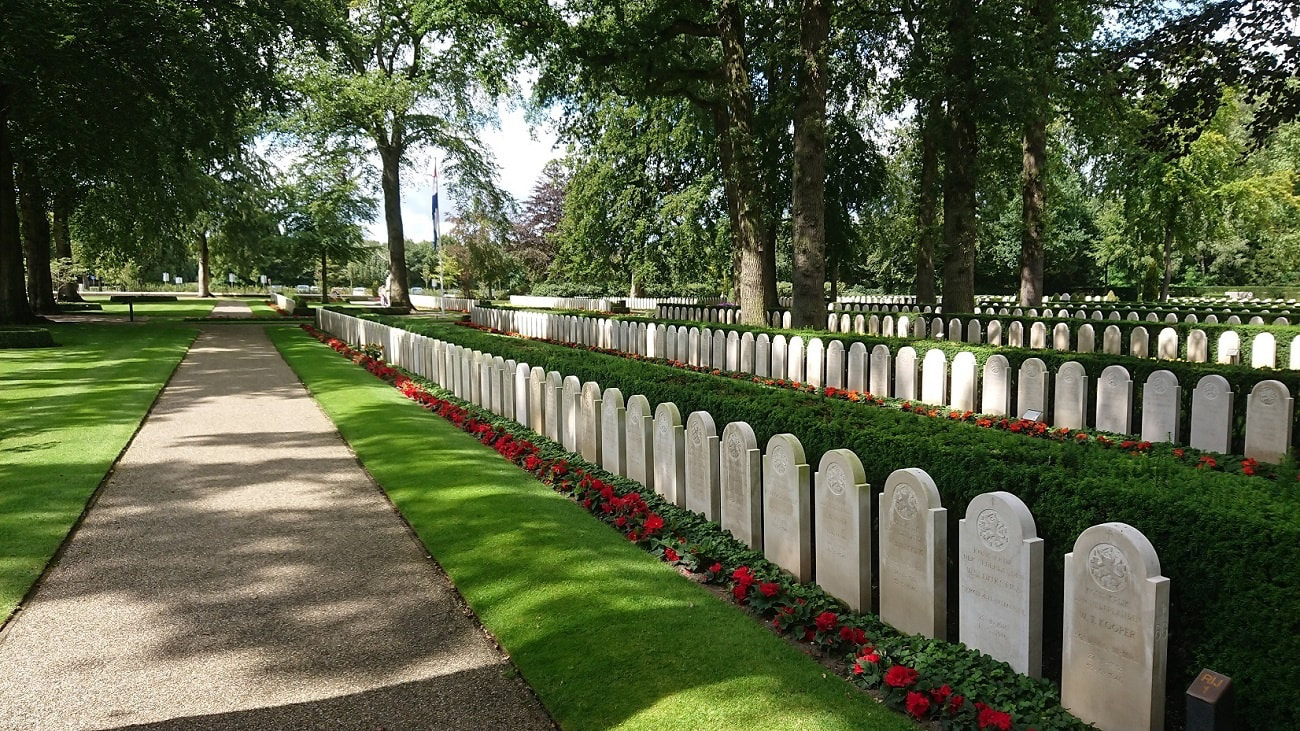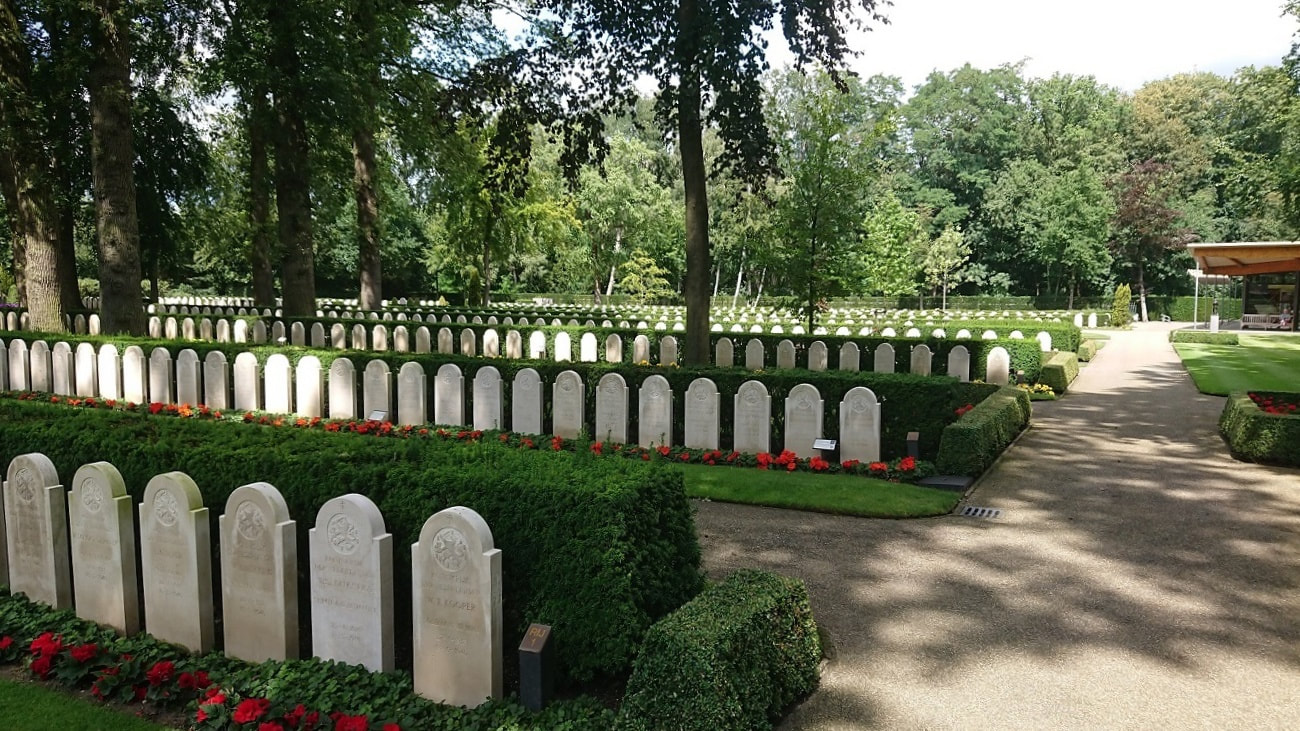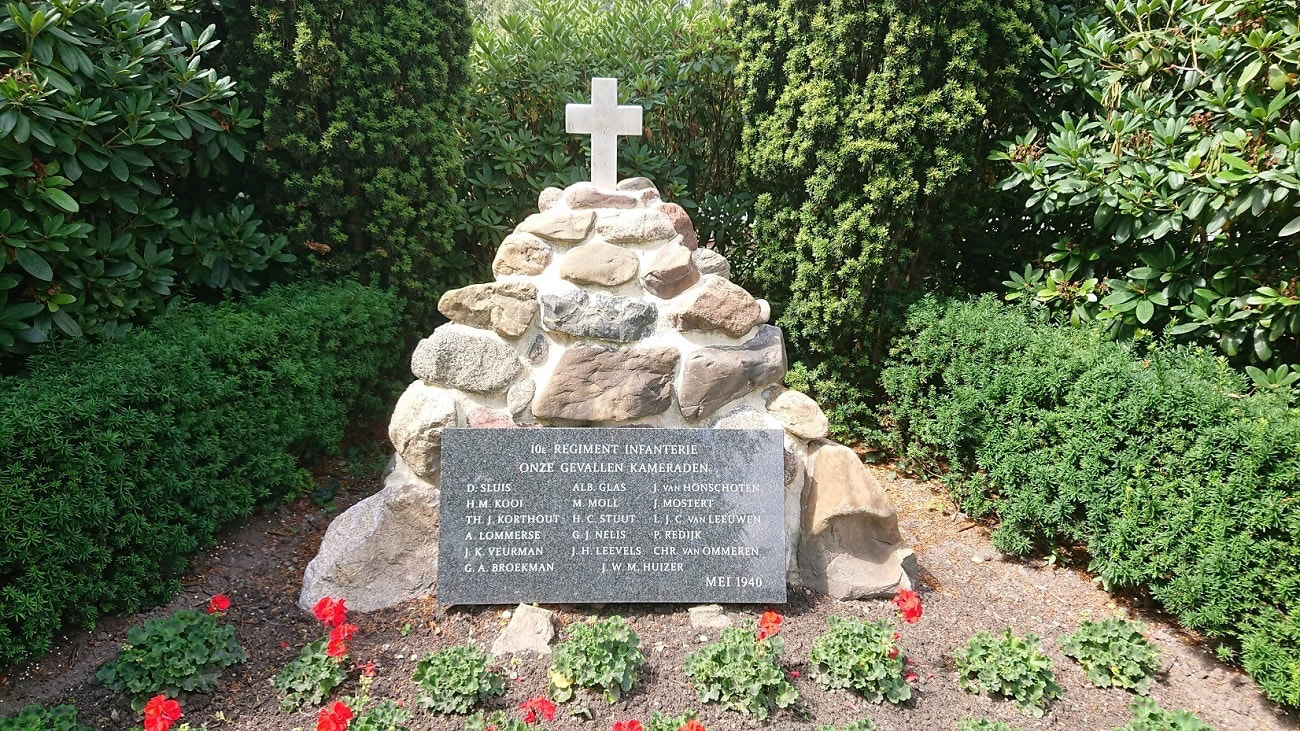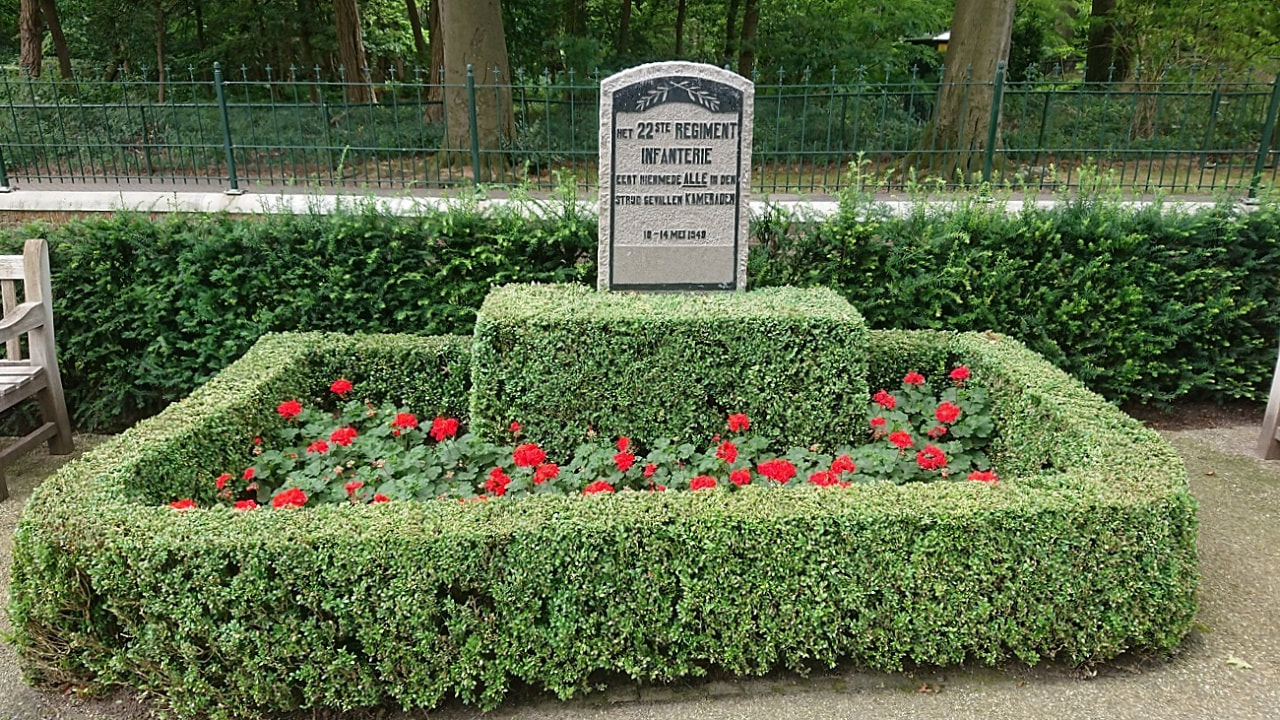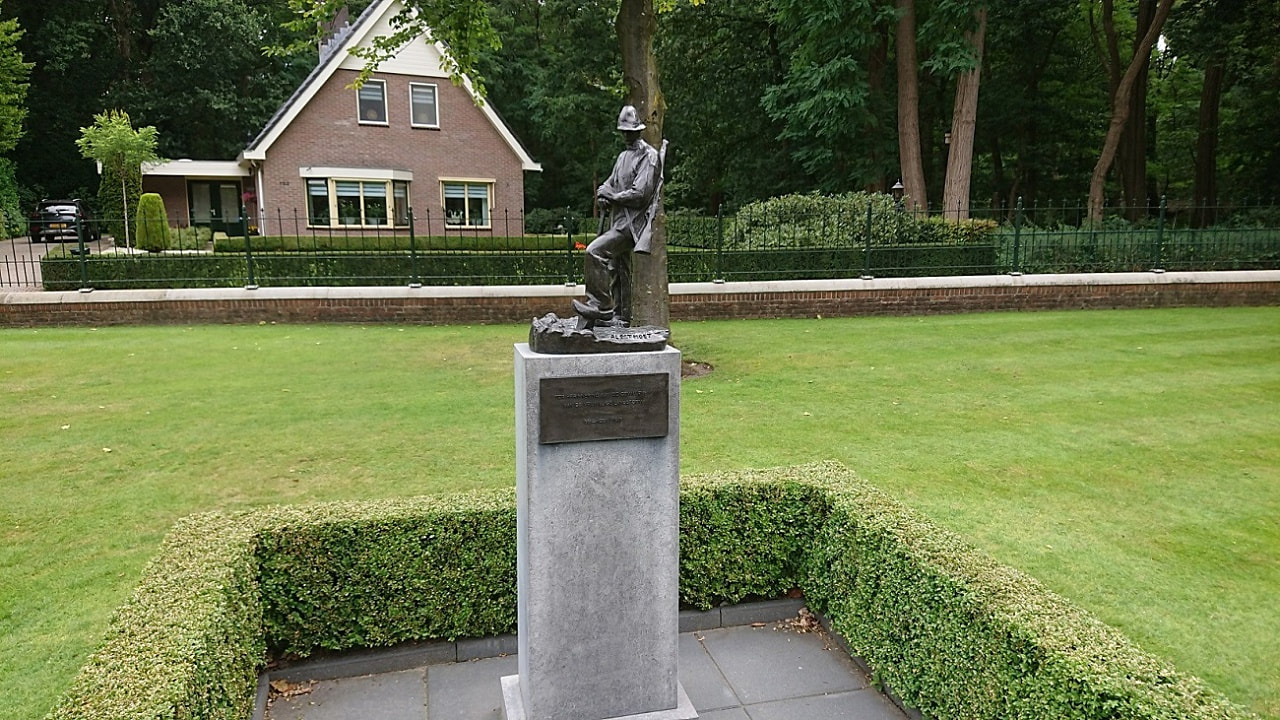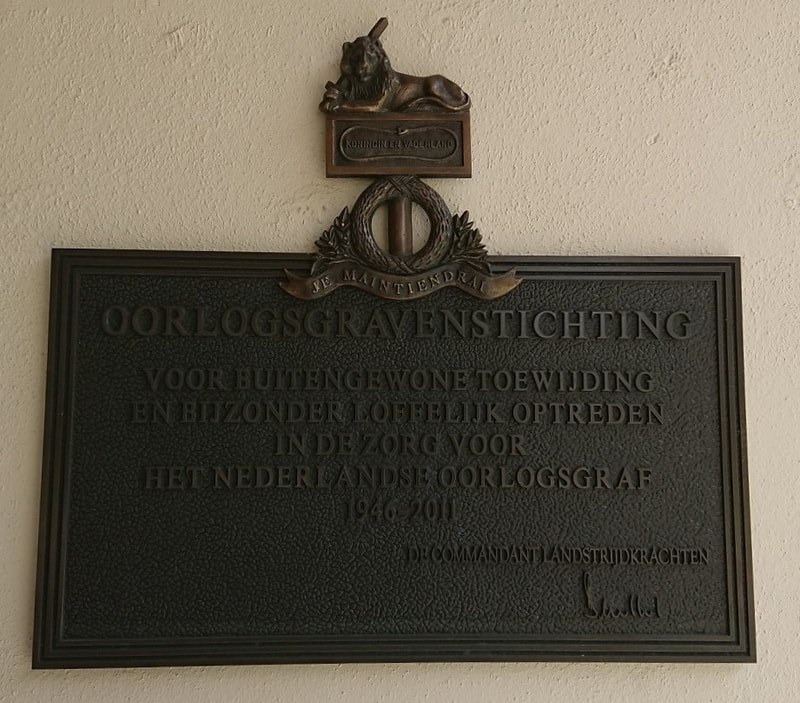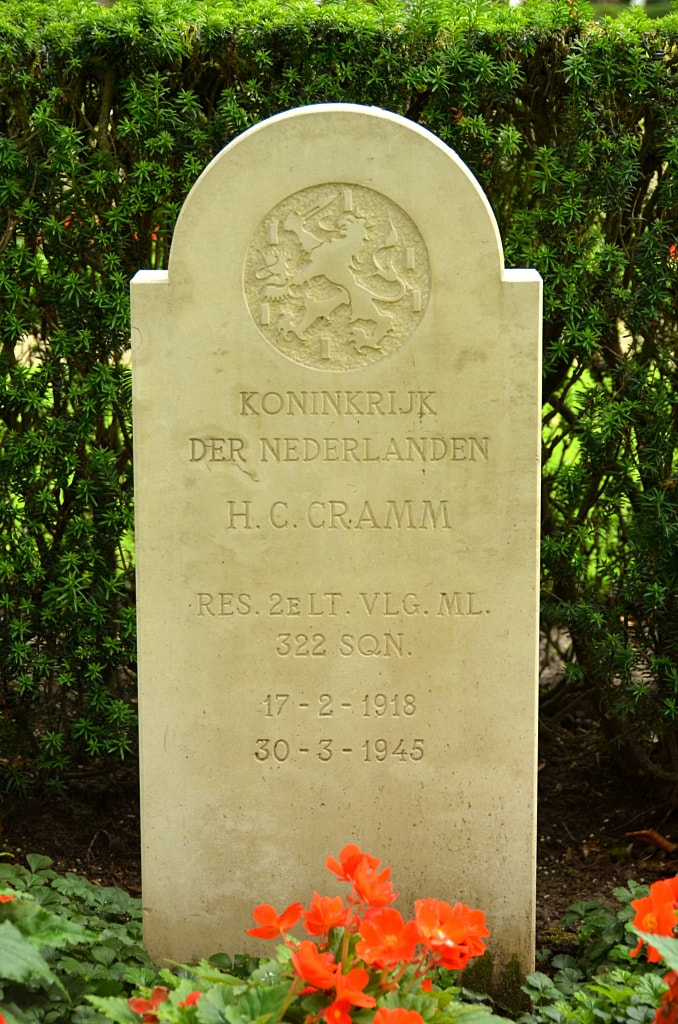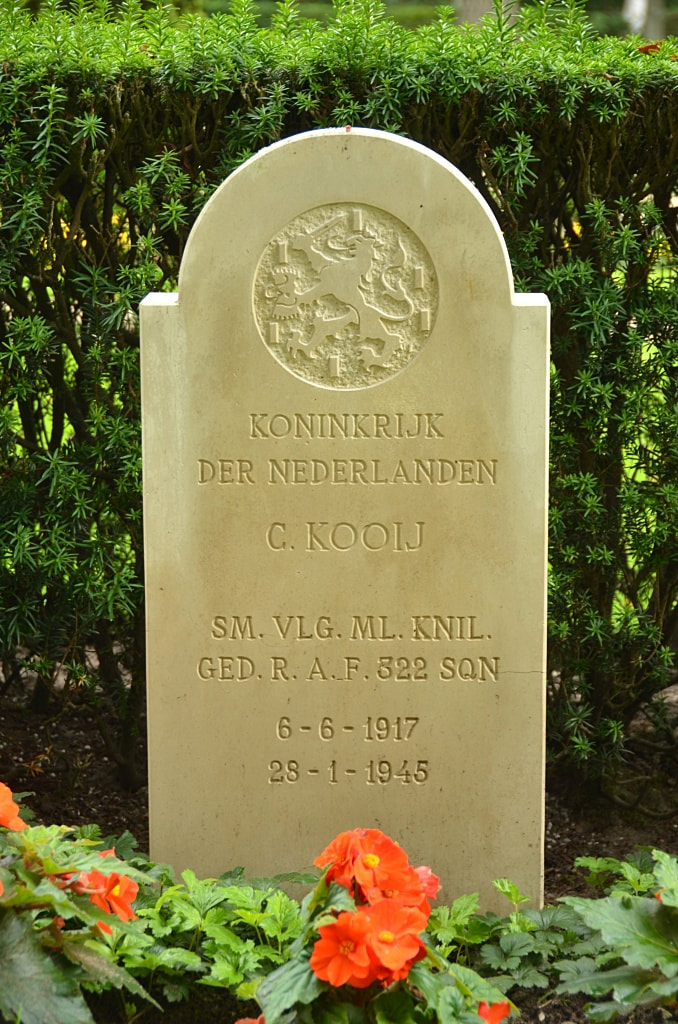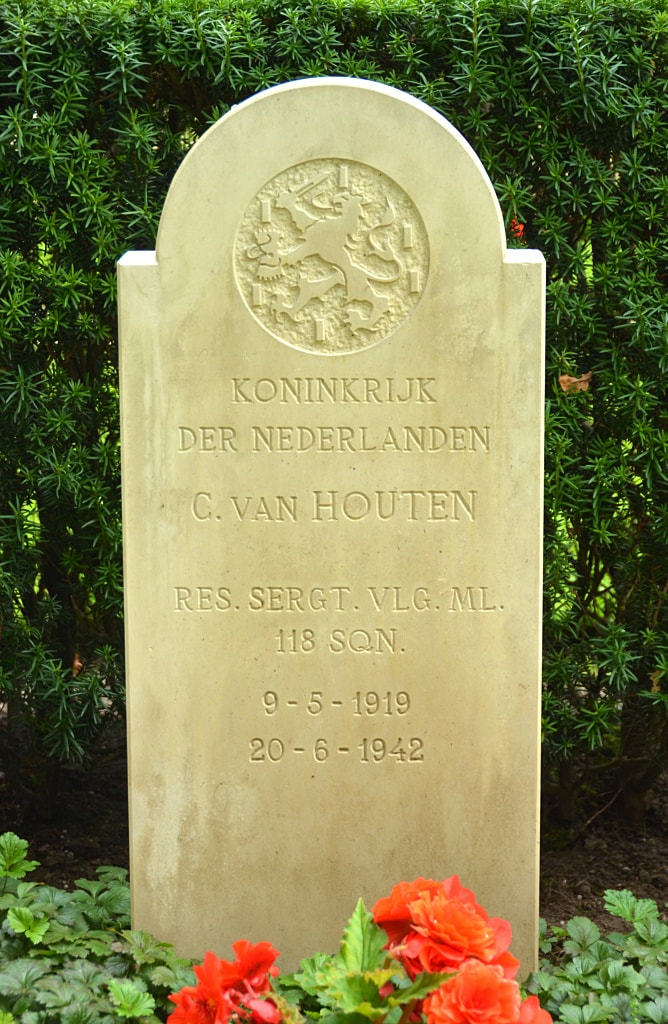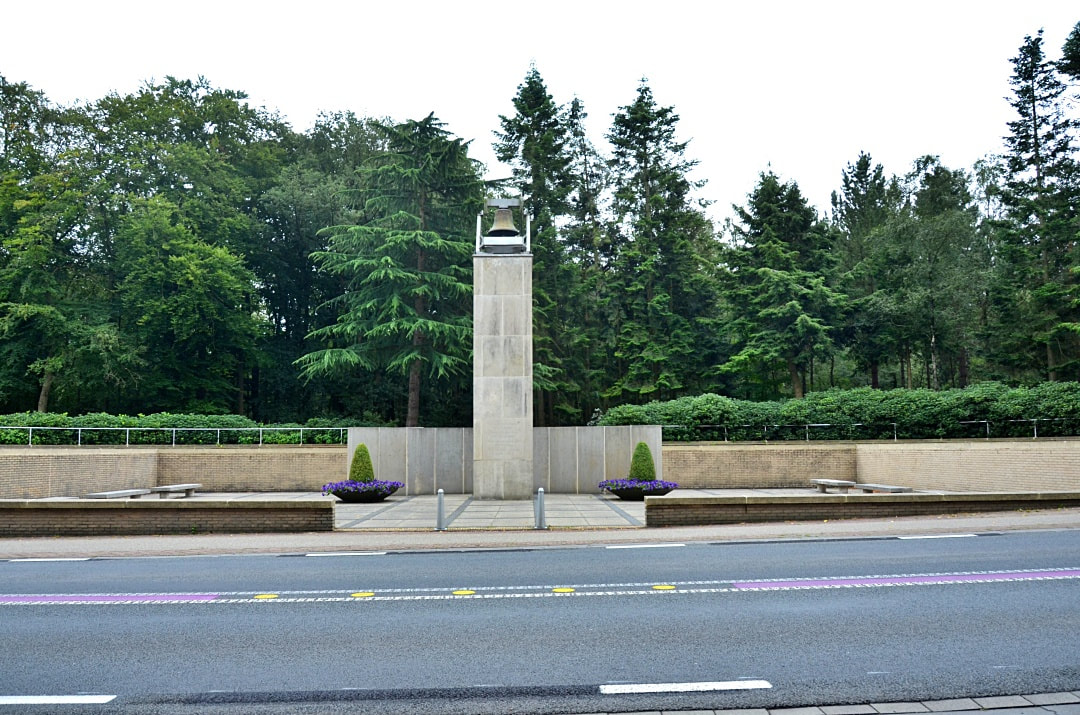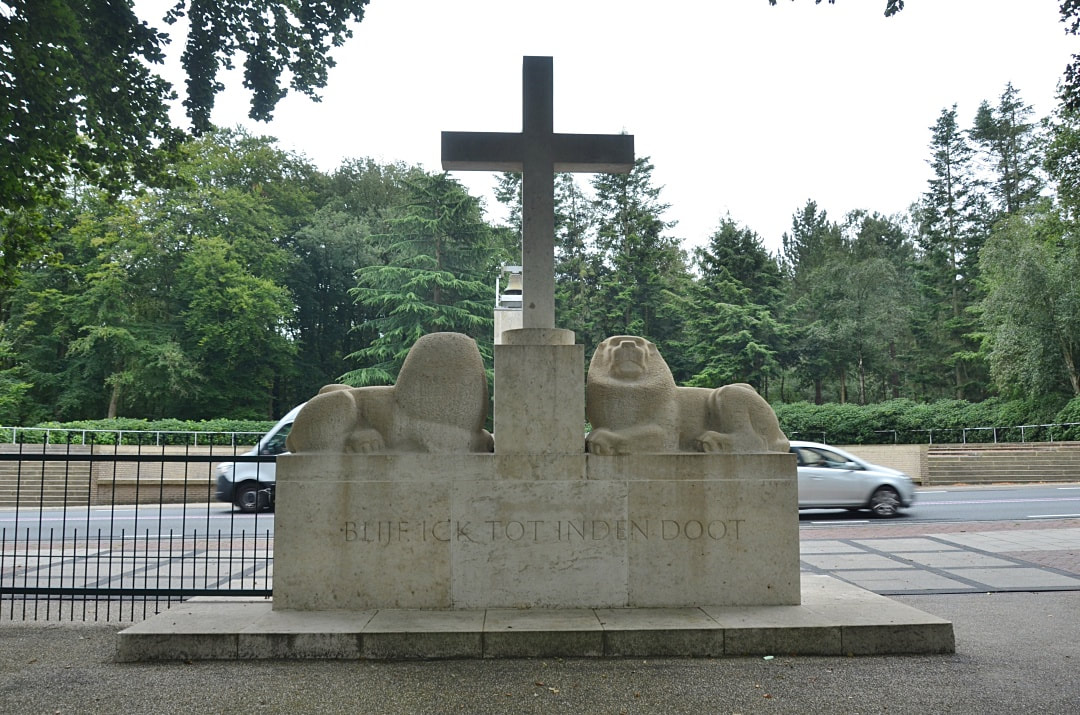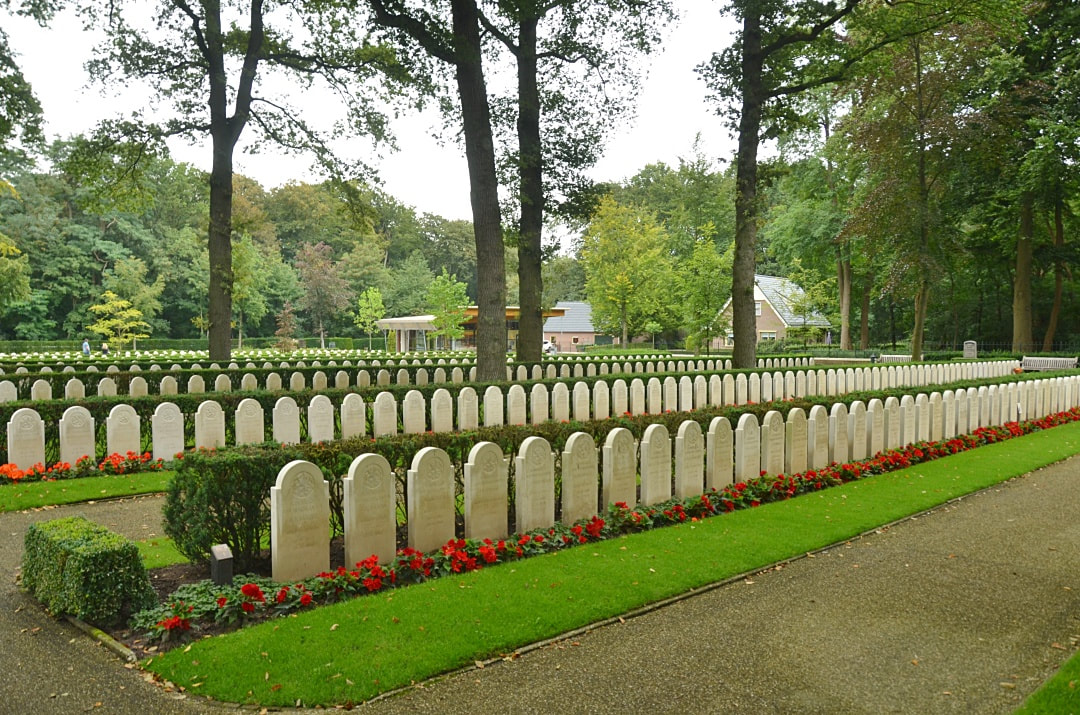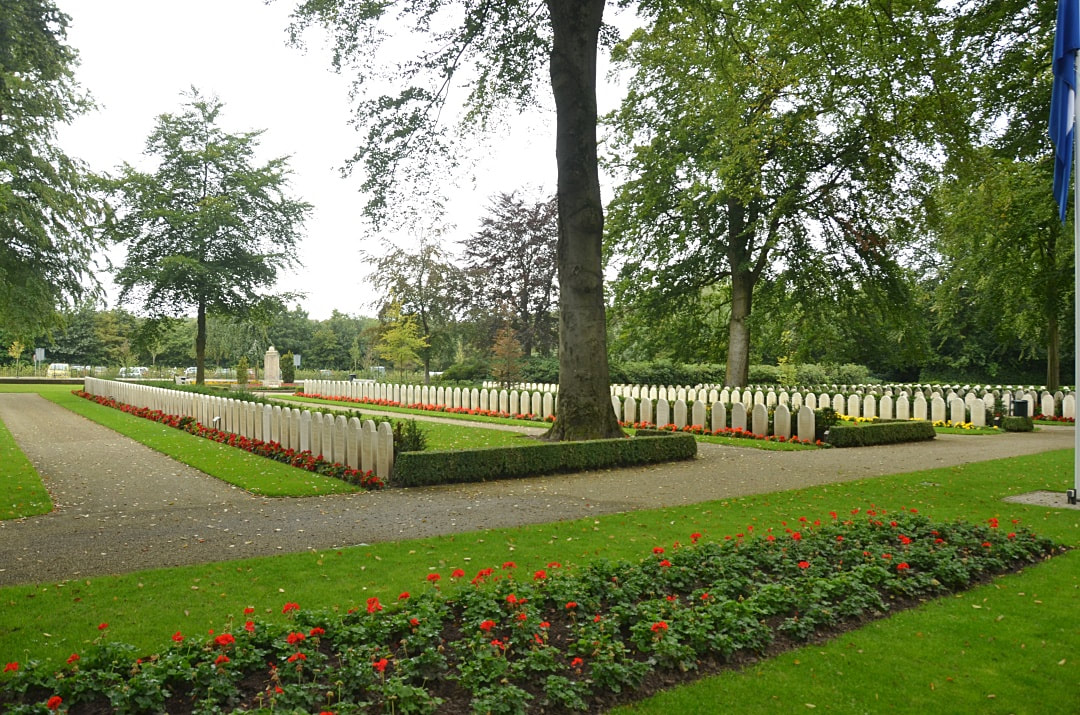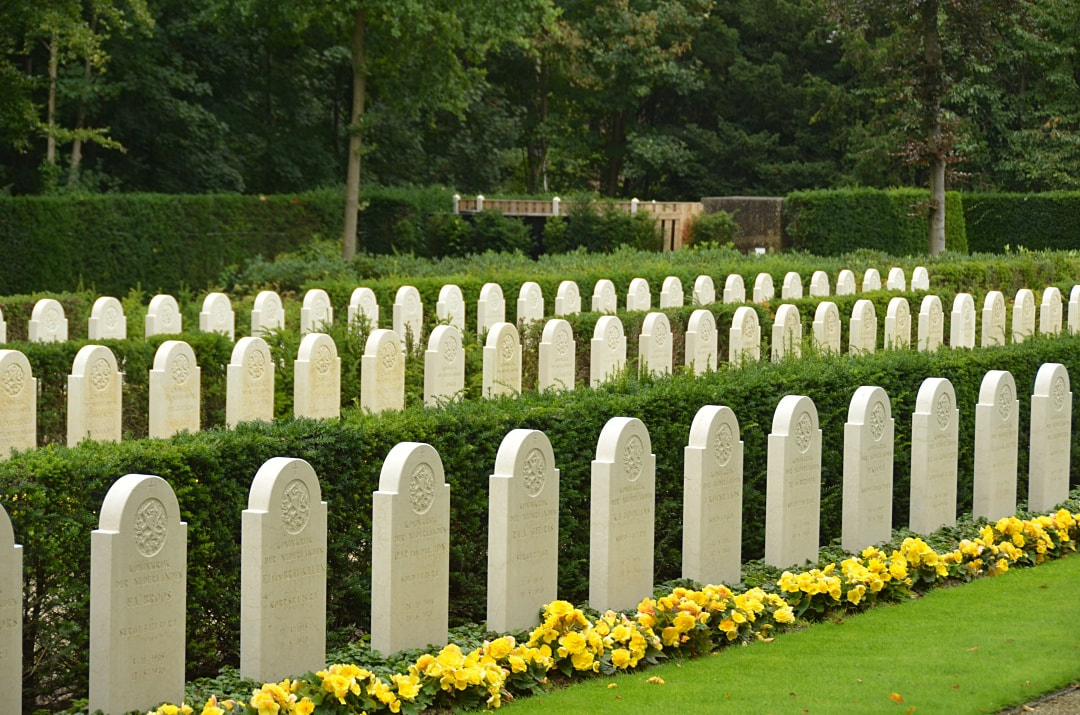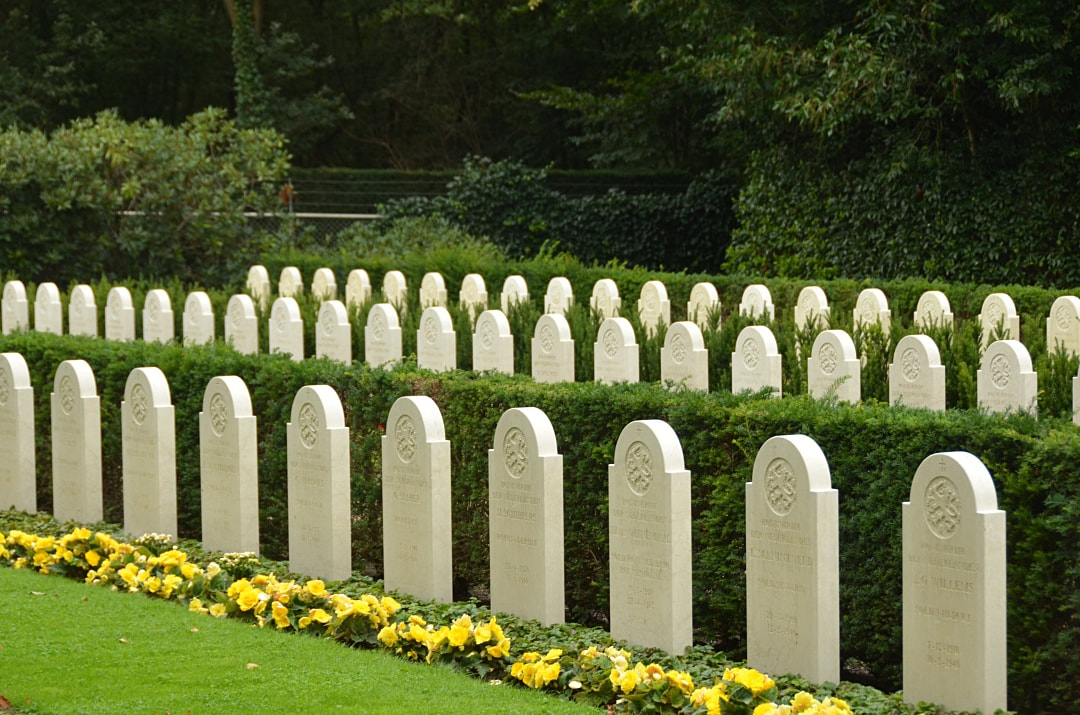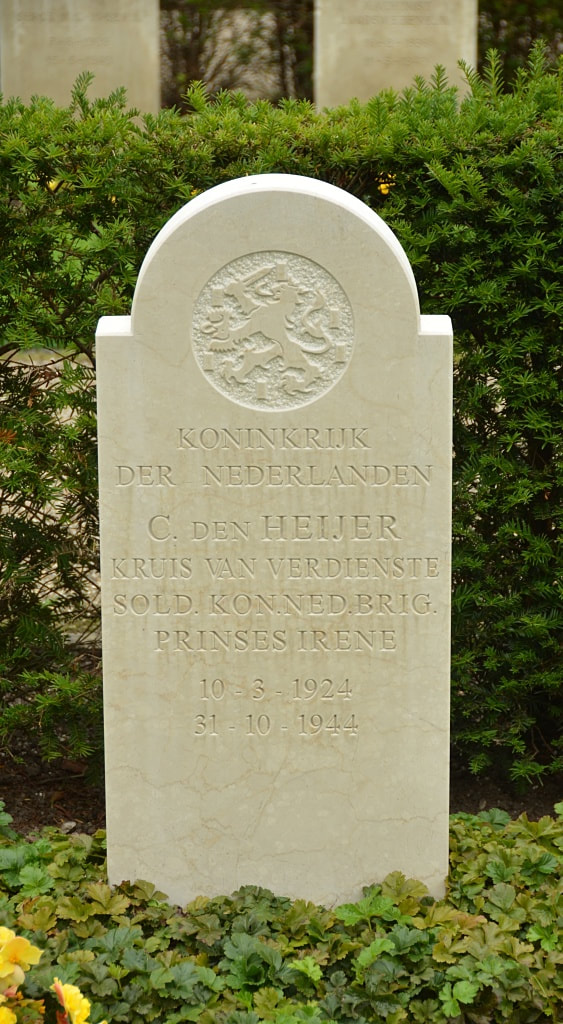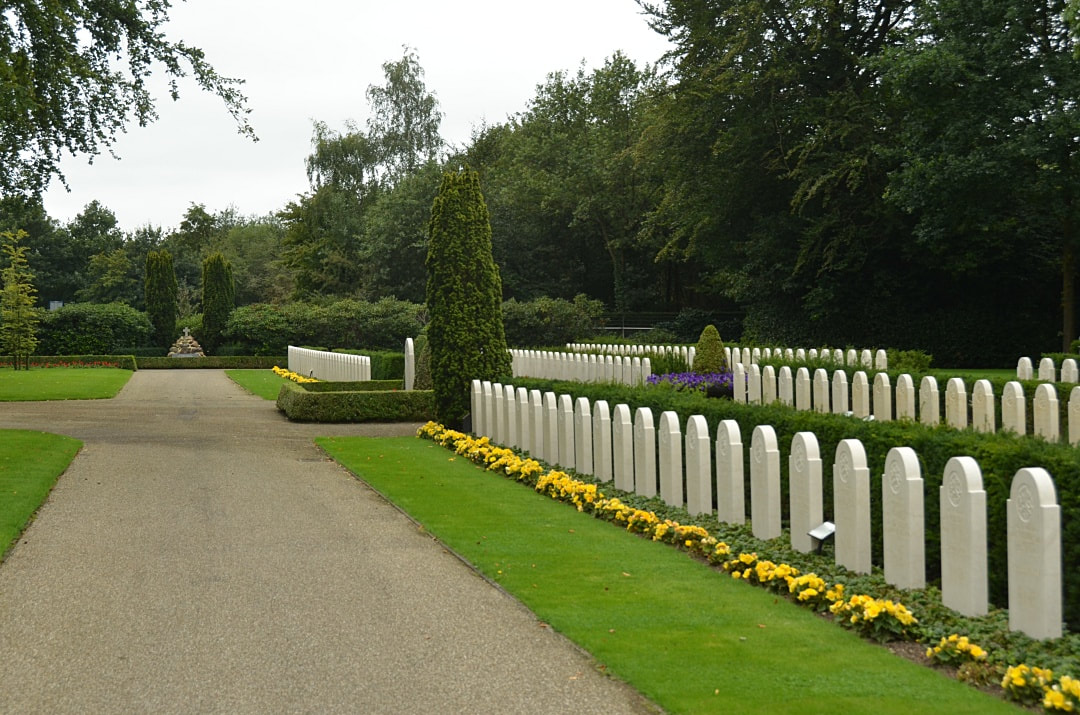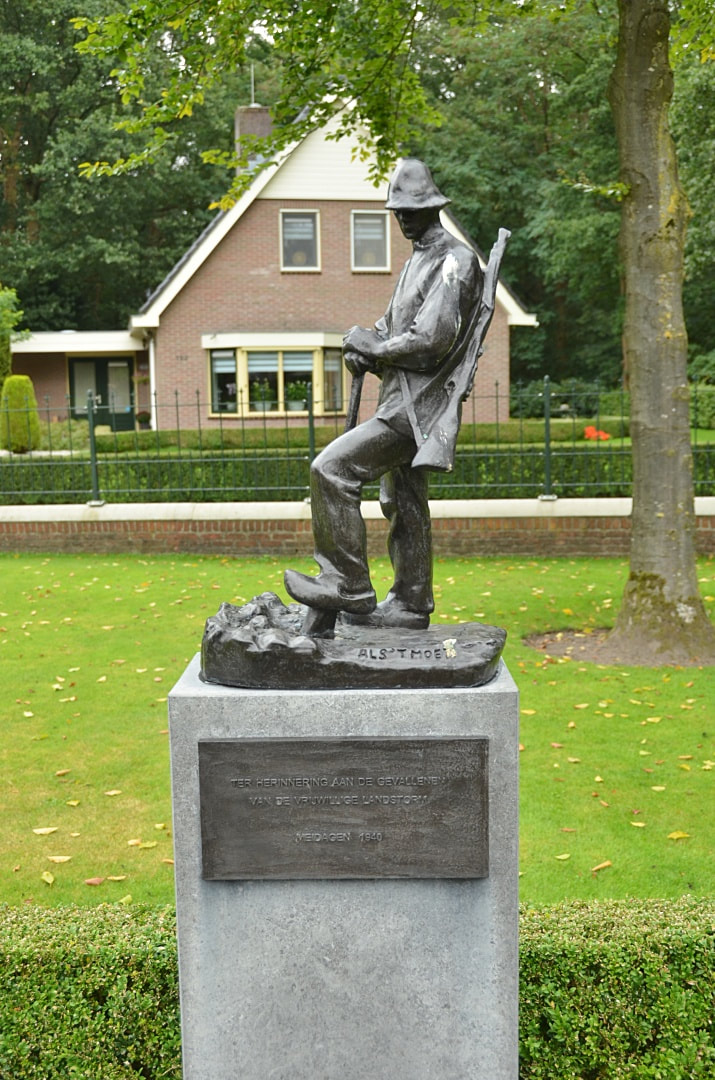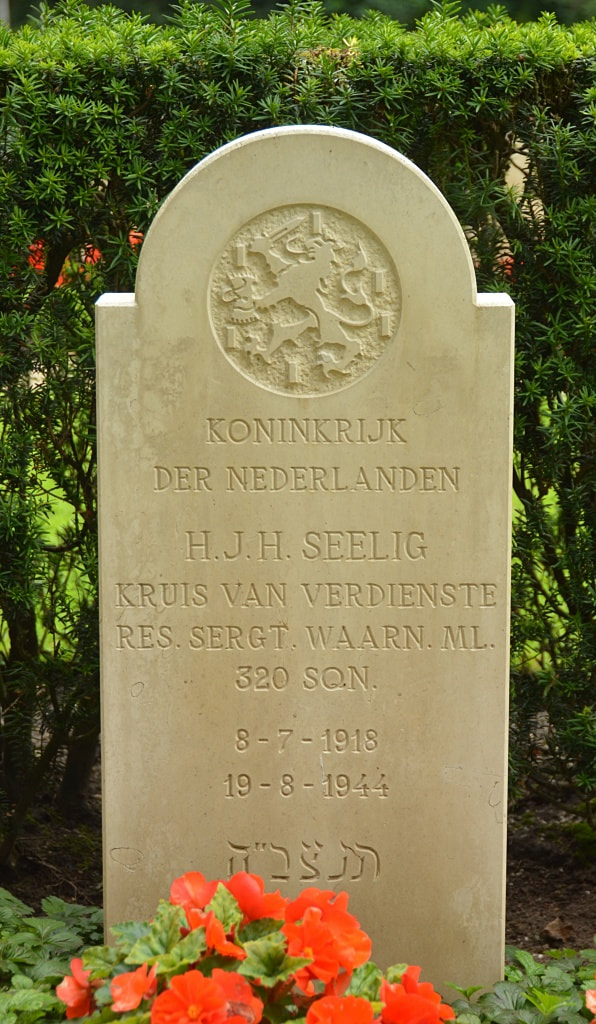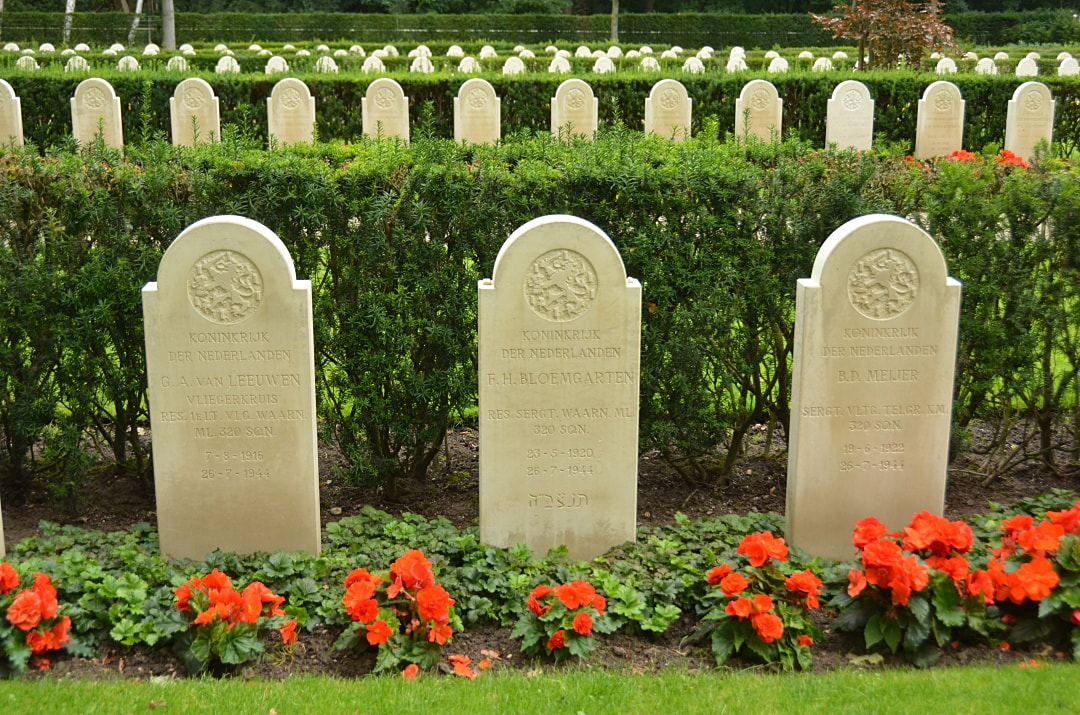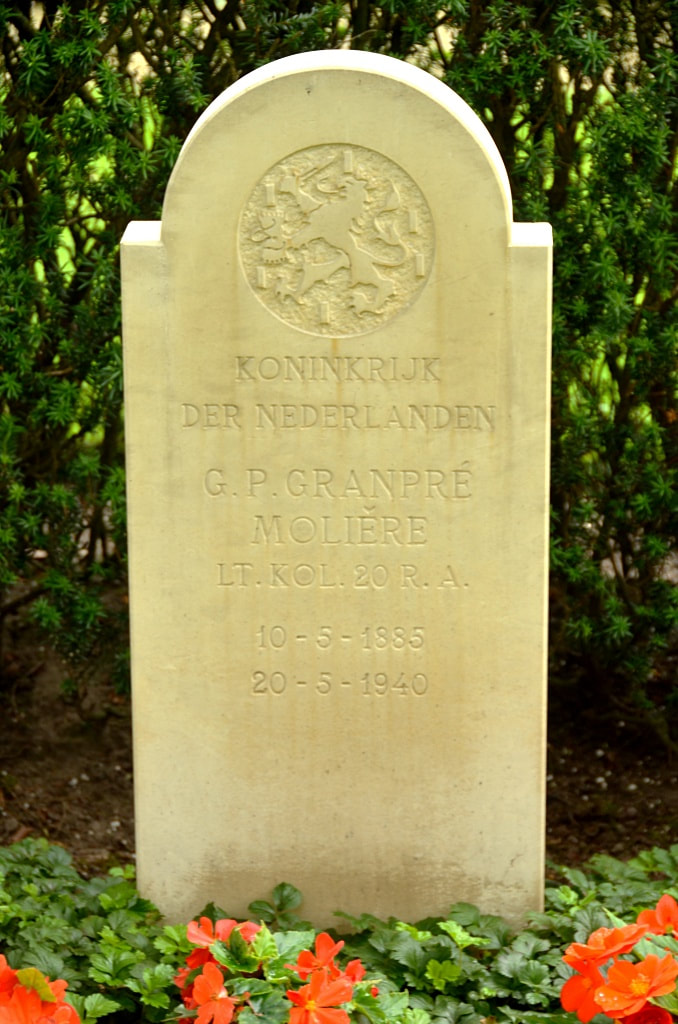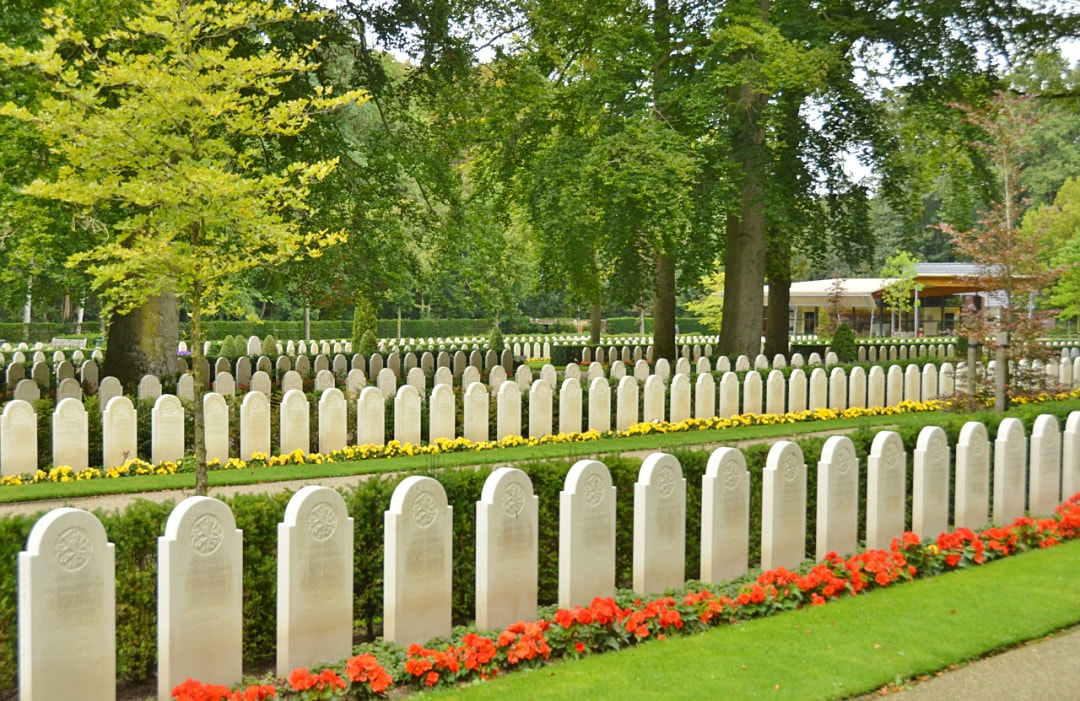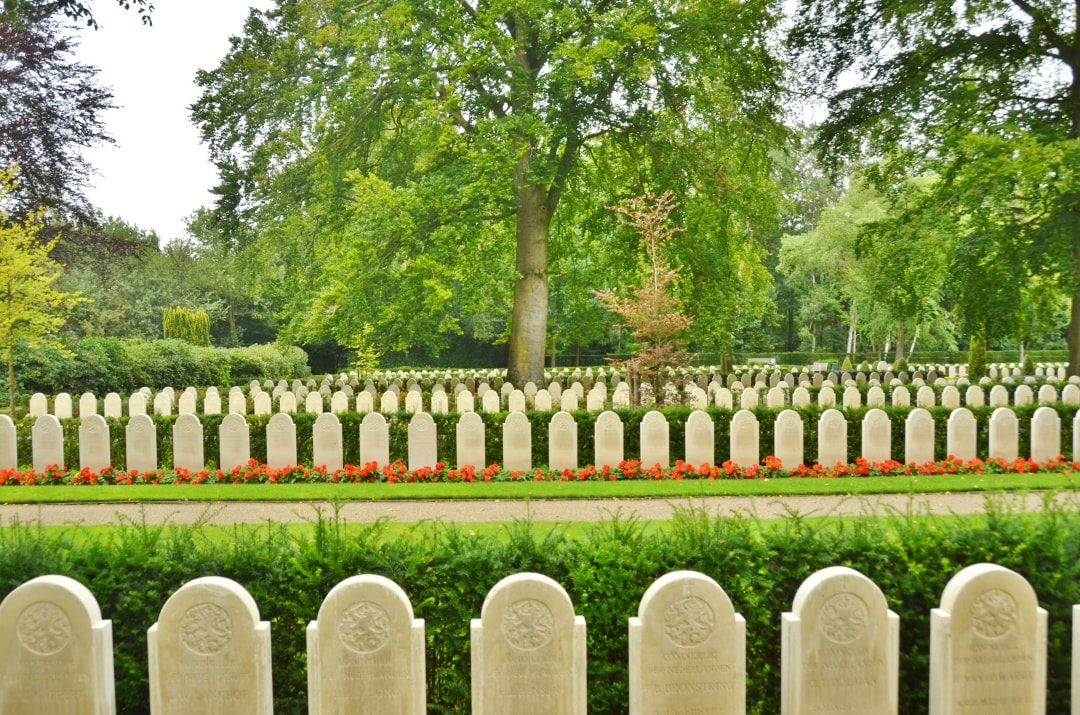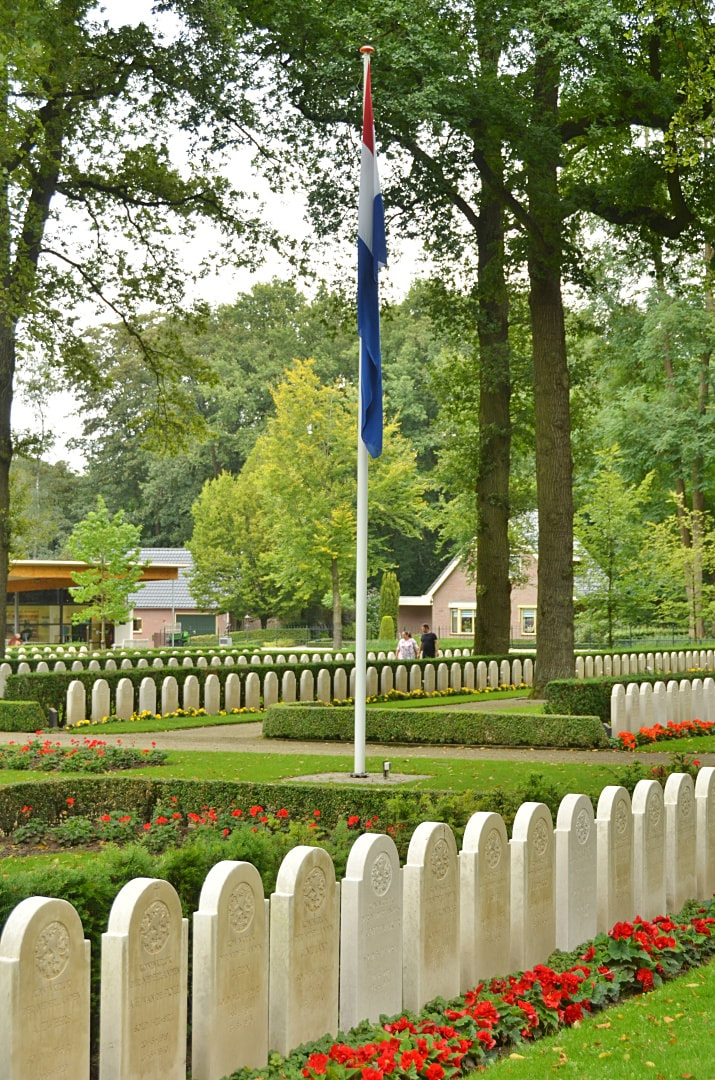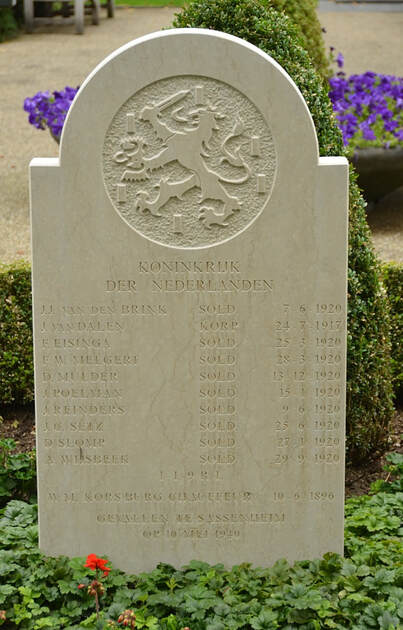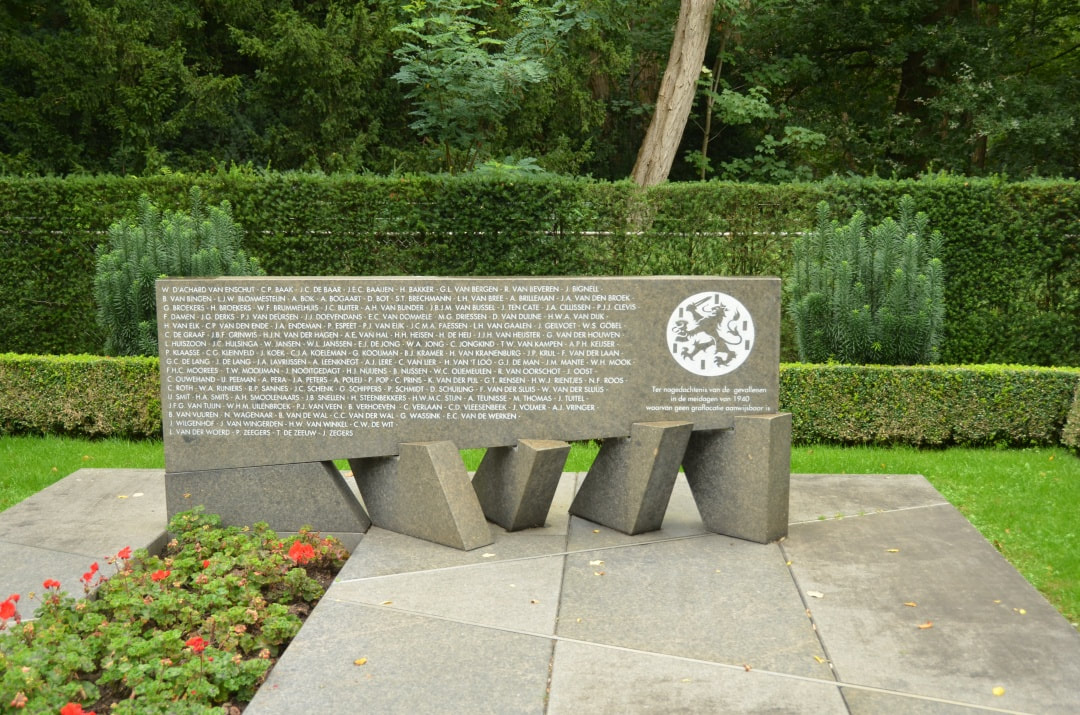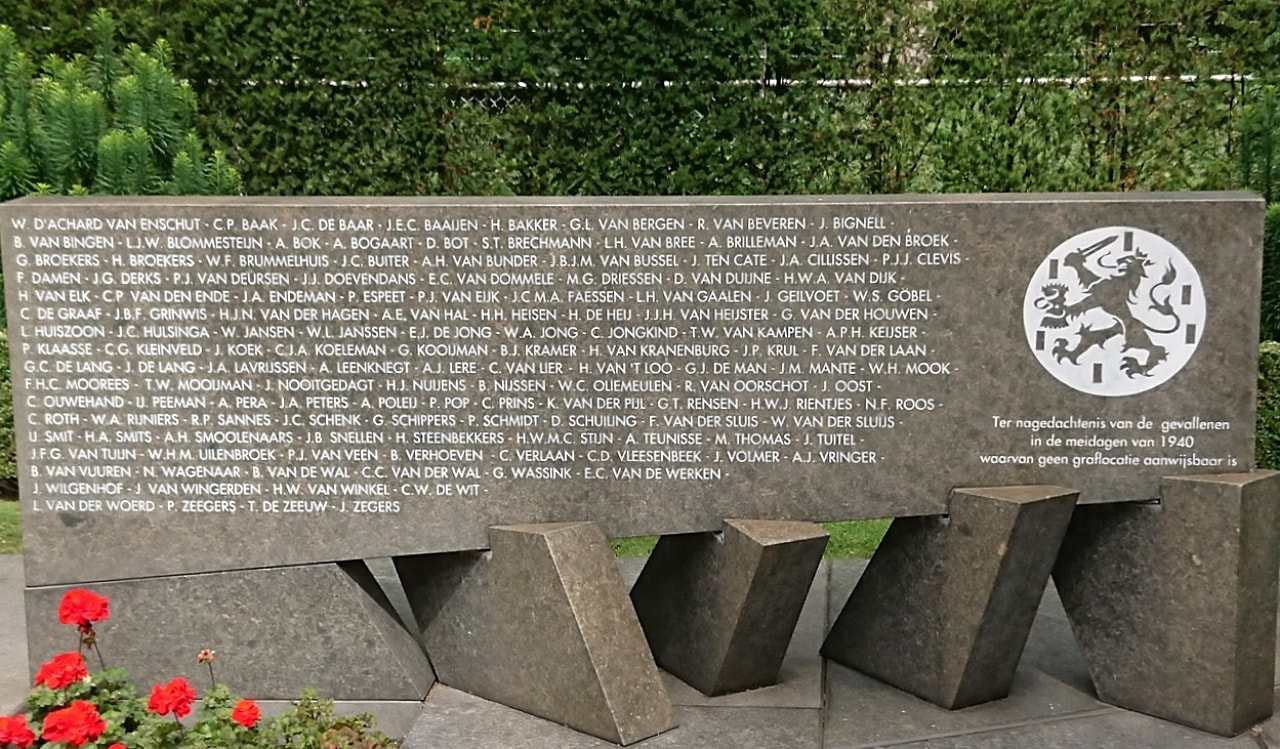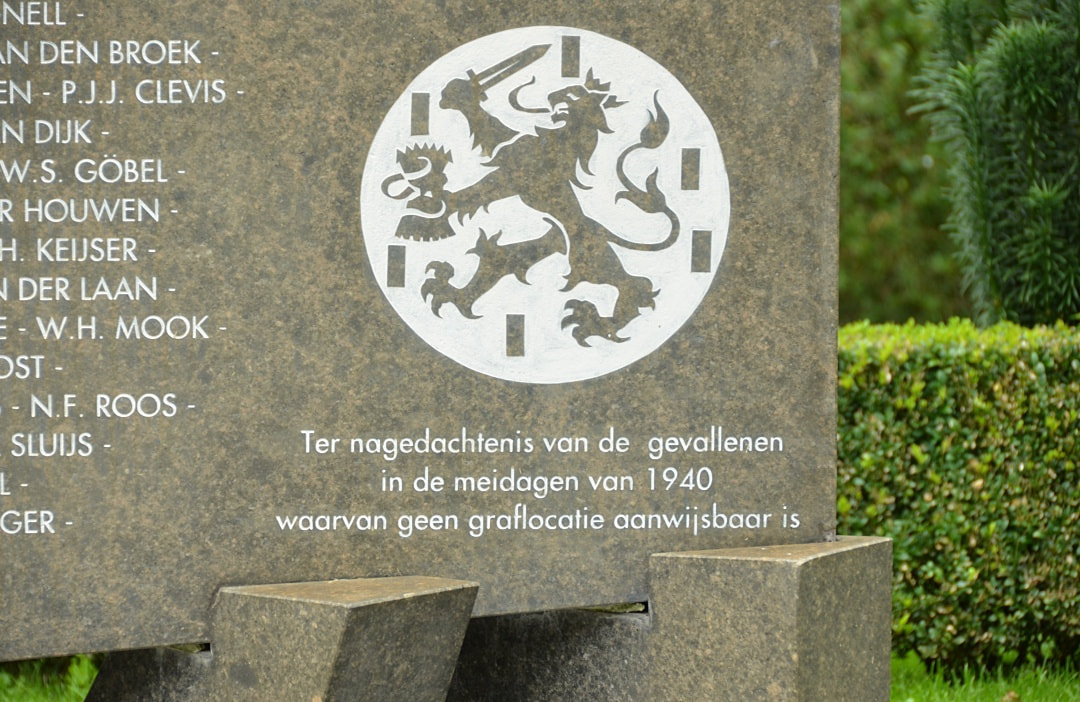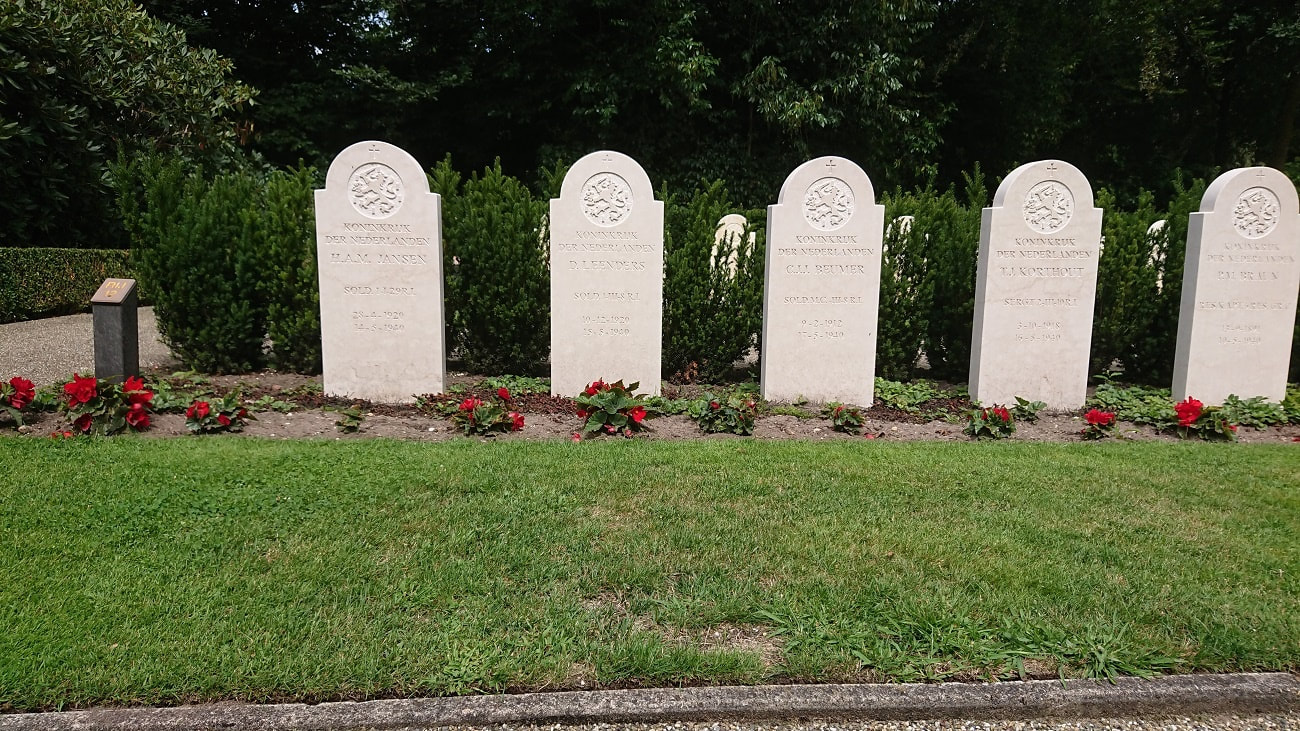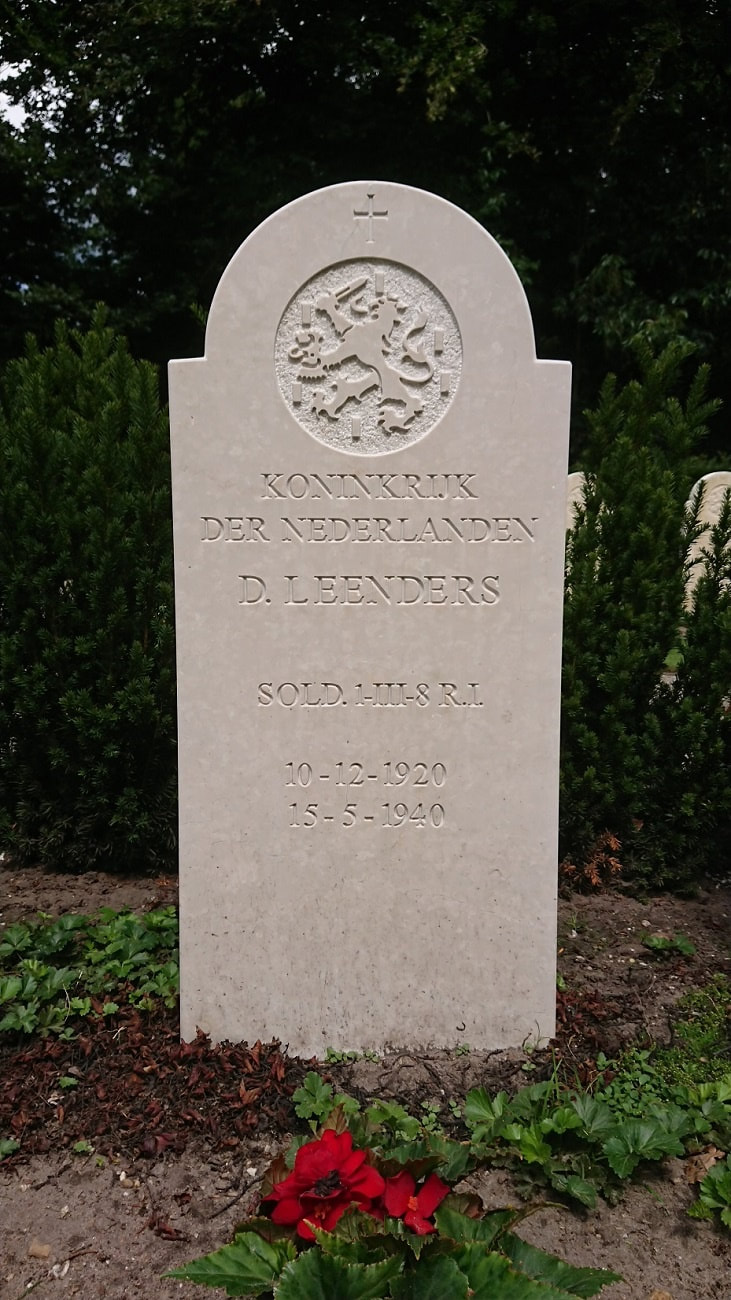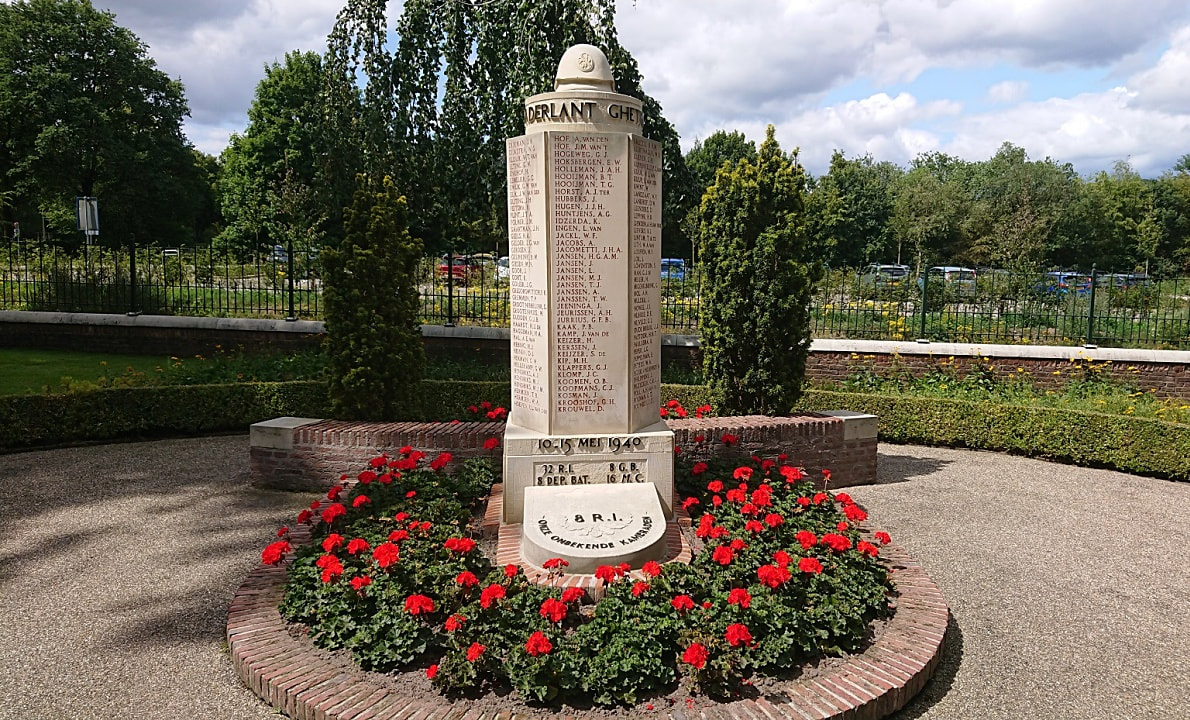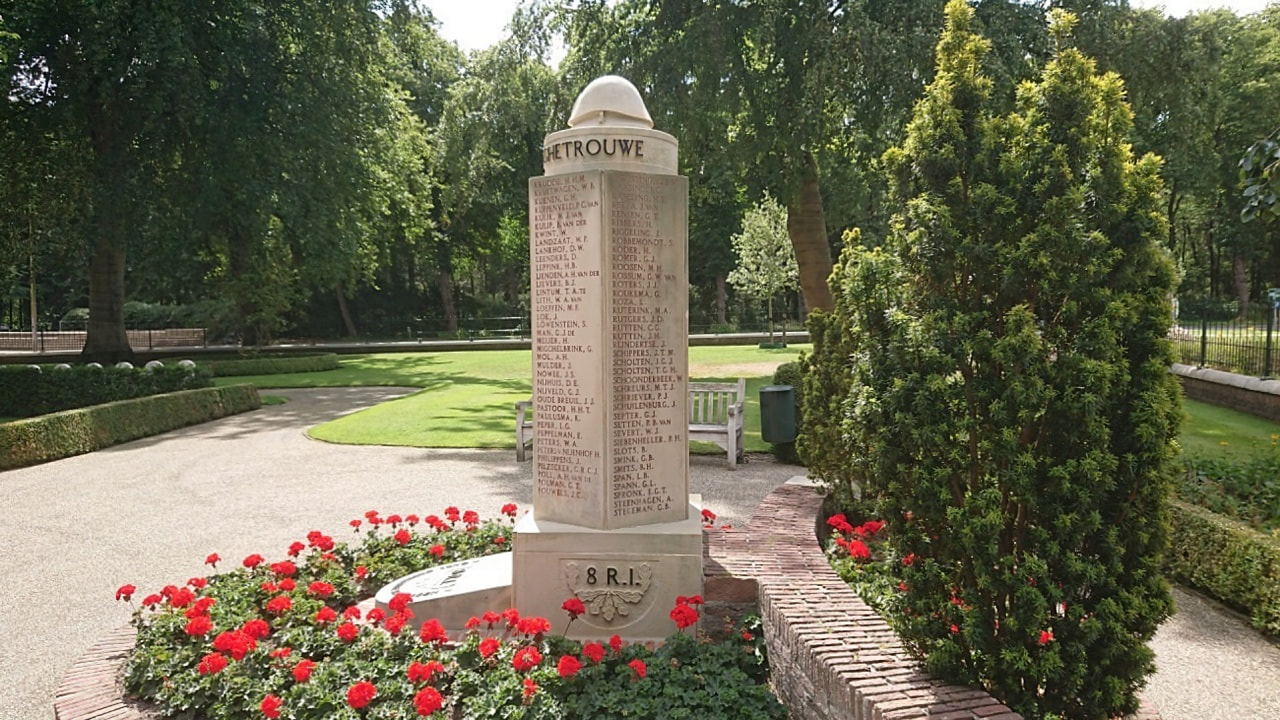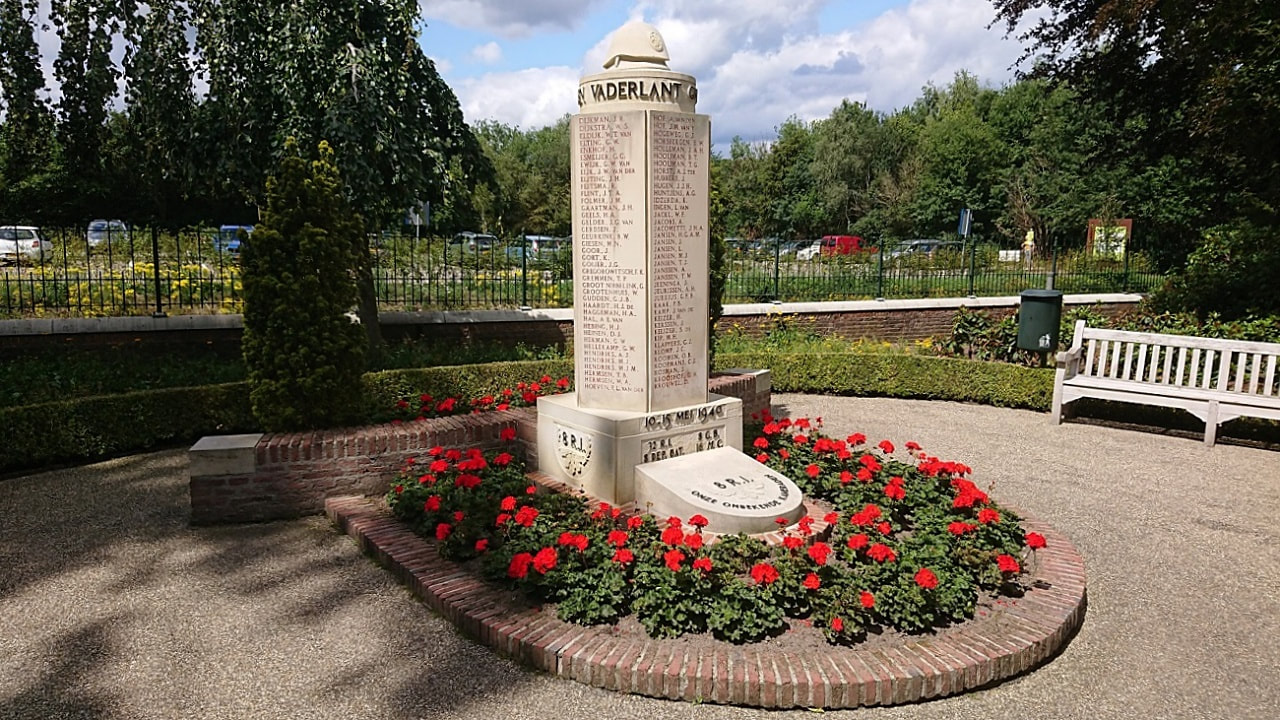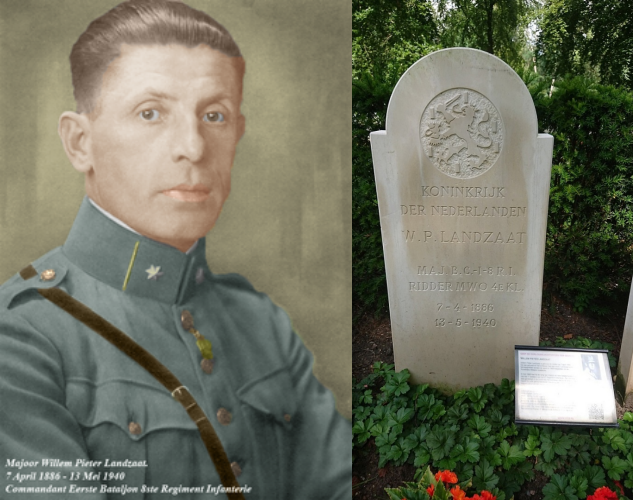RHENEN (GREBBEBERG) NETHERLANDS FIELD OF HONOUR
(Militair Ereveld Grebbeberg)
Rhenen
Utrecht
The Netherlands
GPS Coordinates: 51°57'19.9"N 5°36'02.0"E
Location Information
Grebbeberg is located west of Arnhem on the N225. From the motorway A50 which runs between Apeldoorn and 's Hertogenbosch turn off at Renkum and then turn onto the N225, in the direction of Renkum. Follow the N225 through the village of Renkum and then through the village of Wageningen towards Rhenen. Before the town of Rhenen cross the small river and Grebbeberg Field of Honour is along here on the right.
Historical Information
Rhenen (Grebbeberg) Netherlands Field of Honour (Militair Ereveld Grebbeberg) is a Second World War cemetery, located on the Grebbeberg, a hill 2 km (1.2 mi) east of Rhenen the Netherlands. The cemetery contains 799 military personnel and one civilian who died during the invasion of the Netherlands by the Germans in May 1940. More than 400 of those interred in the cemetery fell during the Battle of the Grebbeberg.
Immediately after the surrender of the Netherlands, a cemetery was laid out at the Grebbeberg for both Dutch and German dead. On 20 May 1940, the cemetery was completed and all the dead were buried. On 27 May all field graves were cleared from around Grebbeberg and the remains were reburied within the cemetery.
The cemetery contained 380 Dutch graves and about 150 German graves. The graves were marked with wooden signs with the name of the soldier, if known. In 1942, a stone wall was built around the cemetery and all tombstones were replaced with headstones. Until that time, many family members or relatives had their own headstone placed on the grave. After the German surrender andfollowing the end of the war, all German graves were moved to the Ysselsteyn German war cemetery. Until 1 January 1952 the cemetery was maintained by the Ministry of Defence, which at that date, transferred it to the Netherlands War Graves Foundation.
The reconstruction of the history of the National Army Monument Grebbeberg shows how the designer, architect J.J.P. Oud, in 1948–1953 conducted intensive consultations with the client about the meaning and symbolism of the monument.[
Since the 1960s, many soldiers were moved from local graves to the cemetery.
The cemetery has a special significance because it is located exactly at the point in the Netherlands where the fiercest fighting took place during the Second World War. After the surrender, it became the first official Dutch war cemetery. After the fighting (and the Dutch capitulation) the German occupiers ordered a search for victims from both sides to have them properly buried.
Since 1946, this cemetery serves as a national memorial site. Here the military memorial ceremony held on Remembrance of the Dead, 4 May. In addition, on Whit, a commemoration of the former Eighth Regiment Infantry takes place, where all the colleagues who died during the May days are commemorated.
There are three dutch graves in the cemetery that are listed by the Commonwealth War Graves Commission. All three were in the Royal Air Force Volunteer Reserve. Images and details below.
Information above provided by Wikipedia.
Grebbeberg is located west of Arnhem on the N225. From the motorway A50 which runs between Apeldoorn and 's Hertogenbosch turn off at Renkum and then turn onto the N225, in the direction of Renkum. Follow the N225 through the village of Renkum and then through the village of Wageningen towards Rhenen. Before the town of Rhenen cross the small river and Grebbeberg Field of Honour is along here on the right.
Historical Information
Rhenen (Grebbeberg) Netherlands Field of Honour (Militair Ereveld Grebbeberg) is a Second World War cemetery, located on the Grebbeberg, a hill 2 km (1.2 mi) east of Rhenen the Netherlands. The cemetery contains 799 military personnel and one civilian who died during the invasion of the Netherlands by the Germans in May 1940. More than 400 of those interred in the cemetery fell during the Battle of the Grebbeberg.
Immediately after the surrender of the Netherlands, a cemetery was laid out at the Grebbeberg for both Dutch and German dead. On 20 May 1940, the cemetery was completed and all the dead were buried. On 27 May all field graves were cleared from around Grebbeberg and the remains were reburied within the cemetery.
The cemetery contained 380 Dutch graves and about 150 German graves. The graves were marked with wooden signs with the name of the soldier, if known. In 1942, a stone wall was built around the cemetery and all tombstones were replaced with headstones. Until that time, many family members or relatives had their own headstone placed on the grave. After the German surrender andfollowing the end of the war, all German graves were moved to the Ysselsteyn German war cemetery. Until 1 January 1952 the cemetery was maintained by the Ministry of Defence, which at that date, transferred it to the Netherlands War Graves Foundation.
The reconstruction of the history of the National Army Monument Grebbeberg shows how the designer, architect J.J.P. Oud, in 1948–1953 conducted intensive consultations with the client about the meaning and symbolism of the monument.[
Since the 1960s, many soldiers were moved from local graves to the cemetery.
The cemetery has a special significance because it is located exactly at the point in the Netherlands where the fiercest fighting took place during the Second World War. After the surrender, it became the first official Dutch war cemetery. After the fighting (and the Dutch capitulation) the German occupiers ordered a search for victims from both sides to have them properly buried.
Since 1946, this cemetery serves as a national memorial site. Here the military memorial ceremony held on Remembrance of the Dead, 4 May. In addition, on Whit, a commemoration of the former Eighth Regiment Infantry takes place, where all the colleagues who died during the May days are commemorated.
There are three dutch graves in the cemetery that are listed by the Commonwealth War Graves Commission. All three were in the Royal Air Force Volunteer Reserve. Images and details below.
Information above provided by Wikipedia.
Images below © Frits Leenders
Listed by Commonwealth War Graves Commission
Headstone images © Johan Pauwels
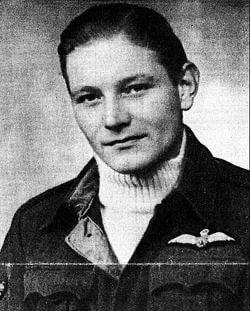
196102 Pilot Officer
Hendrik Charles Cramm
322 (Dutch) Squadron, Royal Air Force Volunteer Reserve
30th March 1945.
Row 8. 3.
Was originally buried in Gorssel Cemetery but was reinterred into this cemetery
Hendrik Charles Cramm
322 (Dutch) Squadron, Royal Air Force Volunteer Reserve
30th March 1945.
Row 8. 3.
Was originally buried in Gorssel Cemetery but was reinterred into this cemetery
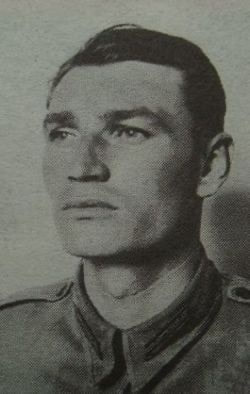
1814967 Flight Sergeant
Cornelis Kooij
322 (Dutch Squadron), Royal Air Force Volunteer Reserve
28th January 1945.
Plot 9. 1.
Was originally buried in Doorn General Cemetery but was reinterred into this cemetery
Cornelis Kooij
322 (Dutch Squadron), Royal Air Force Volunteer Reserve
28th January 1945.
Plot 9. 1.
Was originally buried in Doorn General Cemetery but was reinterred into this cemetery
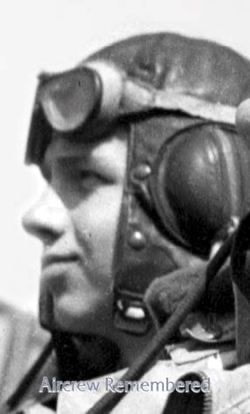
1149995 Sergeant
Cornelis Van Houten
118 Squadron, Royal Air Force Volunteer Reserve
20th June 1942.
Row 8. 19.
Was originally buried in Doorn General Cemetery but was reinterred into this cemetery
"Photograph supplied by Aircrew Remembered"
Cornelis Van Houten
118 Squadron, Royal Air Force Volunteer Reserve
20th June 1942.
Row 8. 19.
Was originally buried in Doorn General Cemetery but was reinterred into this cemetery
"Photograph supplied by Aircrew Remembered"

